Past-meets-present style is the beating heart of a 1950s-inspired living room. From ice-cream pastels to starburst clocks, the decade balanced optimism with easy functionality—design lessons that still feel fresh in 2025. Below you’ll find 20 bite-sized, highly actionable ideas (each roughly one hundred words) that show you exactly how to channel the era’s color, furniture, lighting, and accessories without turning your lounge into a time capsule. Dip into one concept or layer several; every paragraph is a standalone roadmap that keeps practicality, budget, and modern comfort in mind.
1. Pastel Palette Living Room Lift
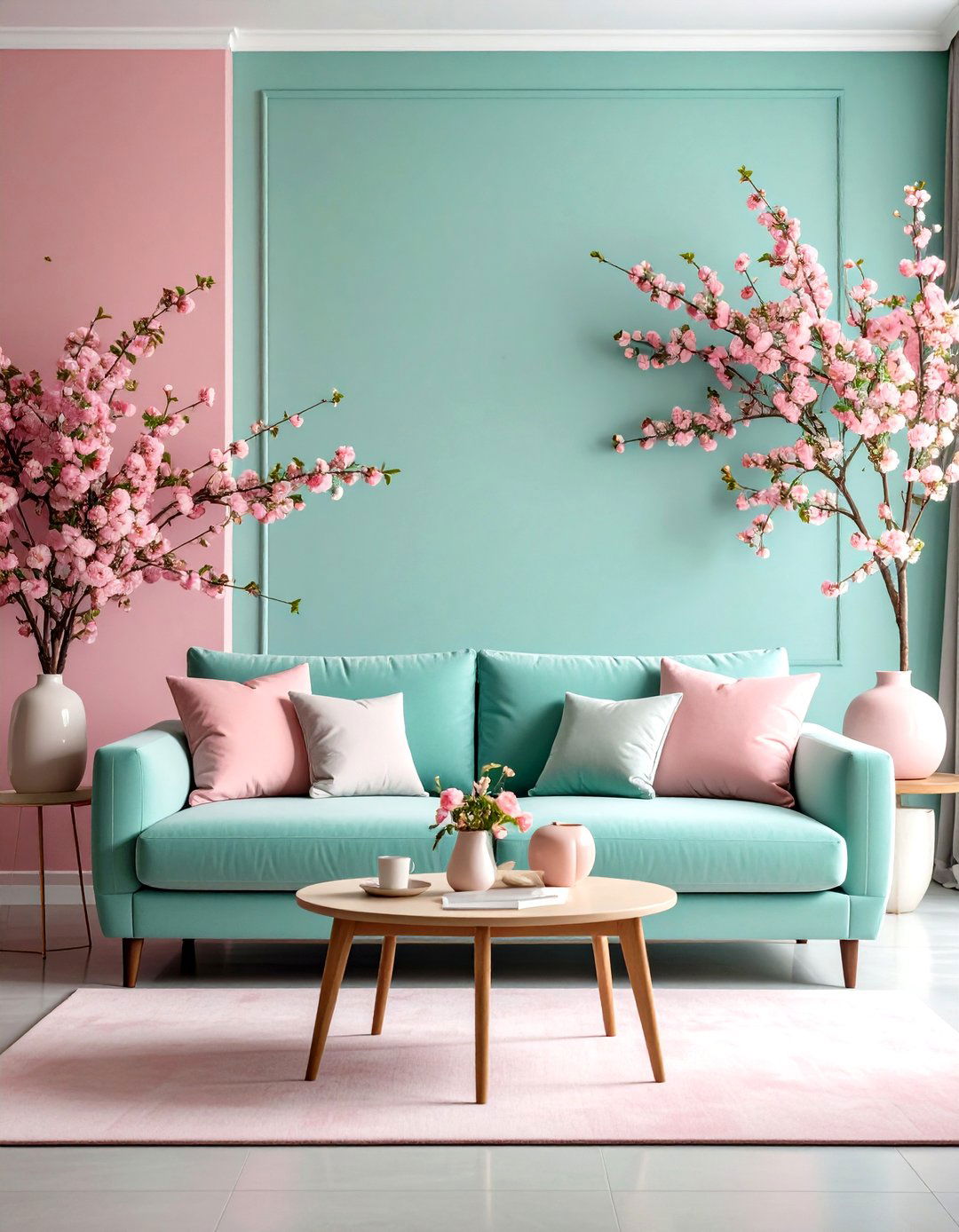
A splash of pink apple-blossom on one wall and a whisper of mint on another instantly telegraph 1950s optimism in a living room. Sherwin-Williams’s “Color Through the Decades” palette highlights chartreuse, lilac, and holiday turquoise as authentic mid-century hues—tones that soften strong furniture lines while bouncing natural light around the space. Keep floors and larger pieces neutral, then layer pastel scatter cushions or a painted side table so the scheme feels airy, not saccharine. Gloss finishes echo the enamel appliances of the era and make small rooms read larger.
2. Chartreuse-and-Turquoise Punch
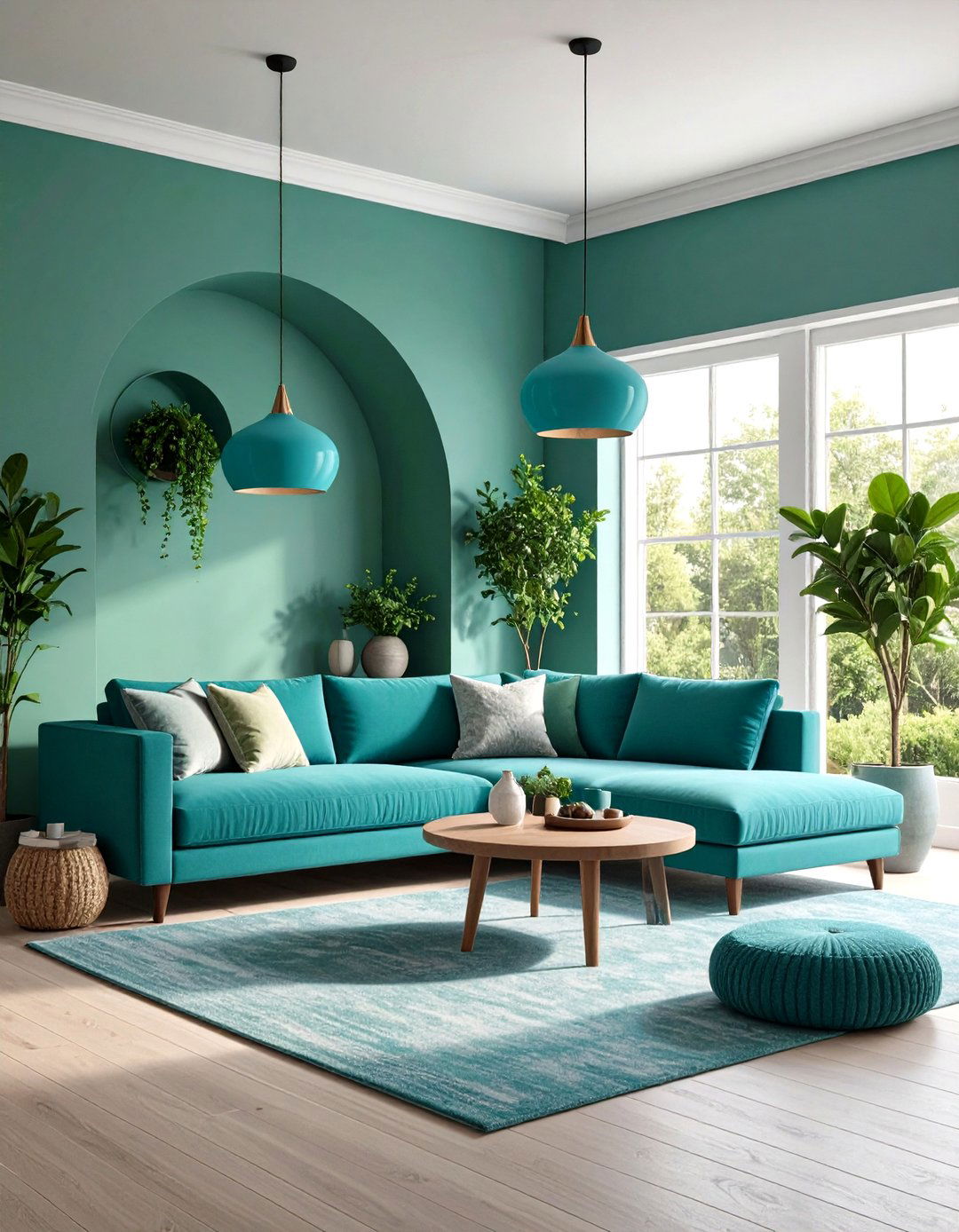
Unlike fragile pastels, high-contrast pairings such as vivid chartreuse beside saturated turquoise give a 1950s living room irresistible swagger. Period paint ads celebrated this fearless duo, and contemporary color experts still call it a foolproof mid-century combo. Try painting the inside of an alcove chartreuse, then drop turquoise lamp bases or planters in front to create depth without clutter. The trick is restraint: let neutrals ground at least 60 percent of the room so bright tones read as confident accents rather than carnival chaos.
3. Boomerang Coffee-Table Centerpiece
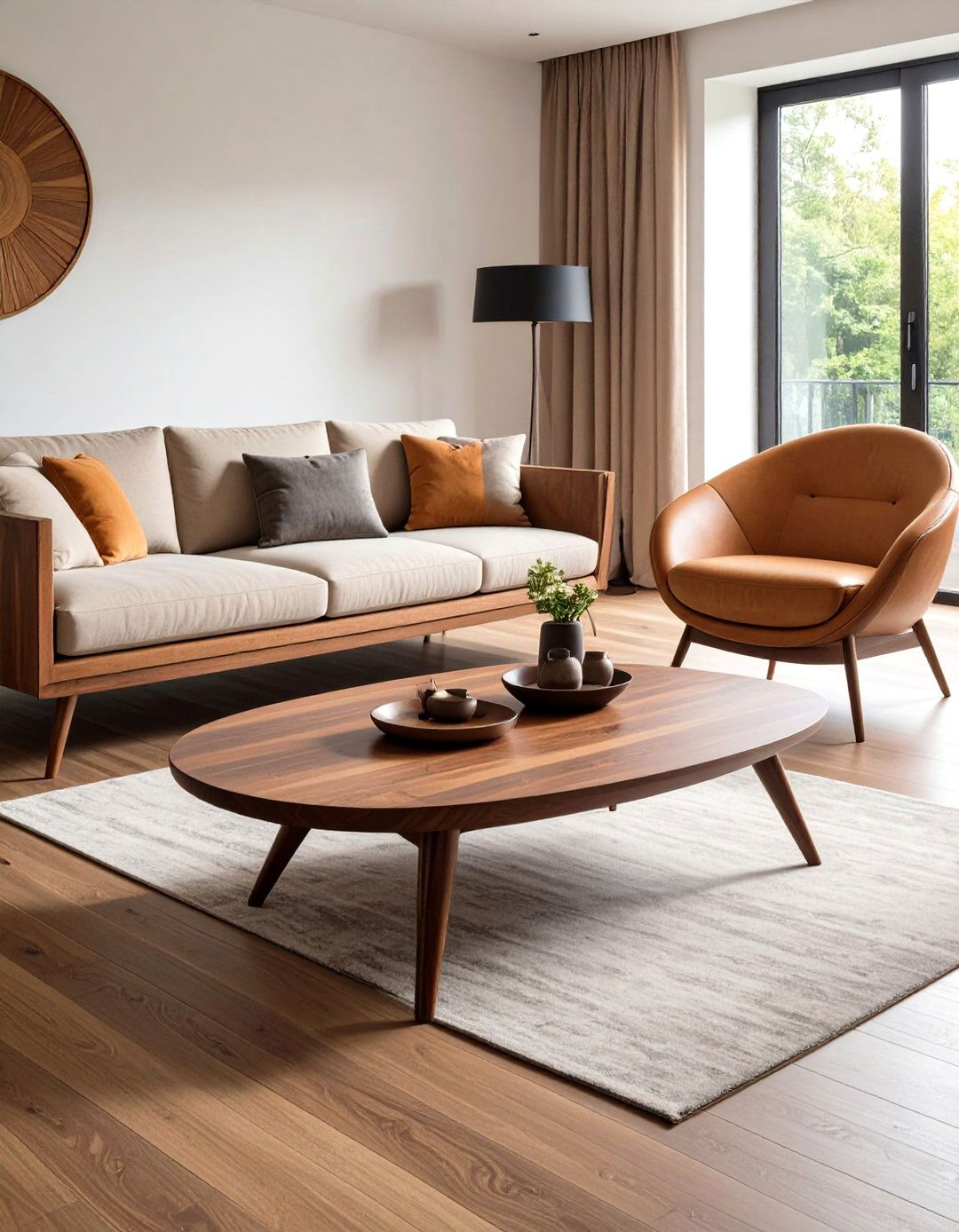
Consider the boomerang coffee table the conversational nucleus of a true 1950s living room. Its asymmetrical surfboard shape, often rendered in walnut with hairpin legs, invites guests to gather while leaving circulation paths wide open. Vintage examples on 1stDibs show how the dynamic curve complements both straight-armed sofas and circular lounge chairs, making it easy to mix old and new seating. If originals are beyond budget, modern reproductions in laminate capture the vibe for a fraction of the cost and resist spills with ease.
4. Sleek Sectional for Family Flow
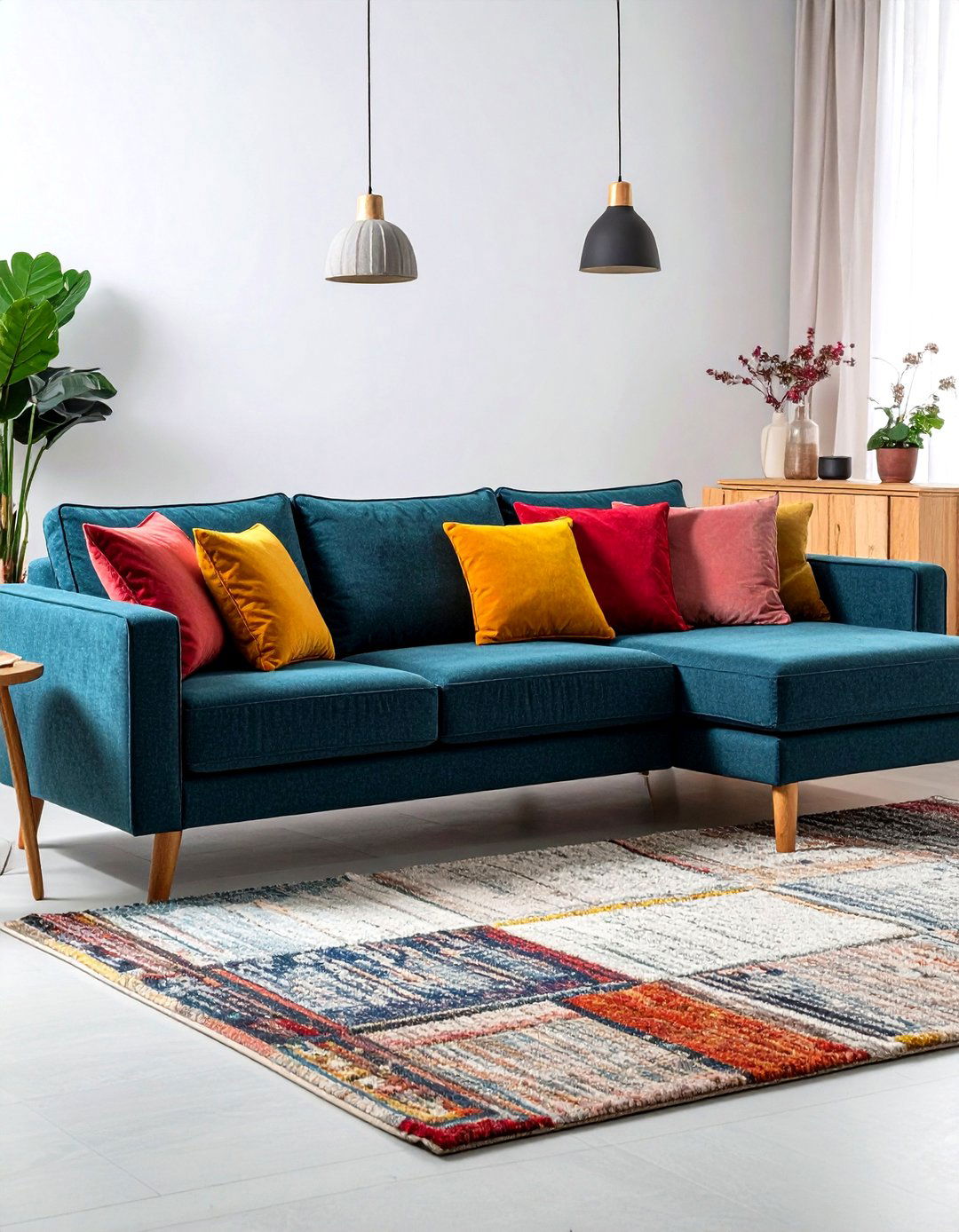
What, after all, says “nuclear family” louder than a low-slung sectional sofa? Designers of the late ’40s and ’50s promoted modular seating so parents could chat while kids sprawled for Saturday-morning cartoons. A modern sectional in a jewel-tone wool blend keeps the spirit alive yet beats period foam on durability. Float the unit away from walls to echo mid-century layouts that prized conversation over TV watching, and add tapered wooden legs so the piece feels airy rather than bulky.
5. Iconic Eames Lounge Moment
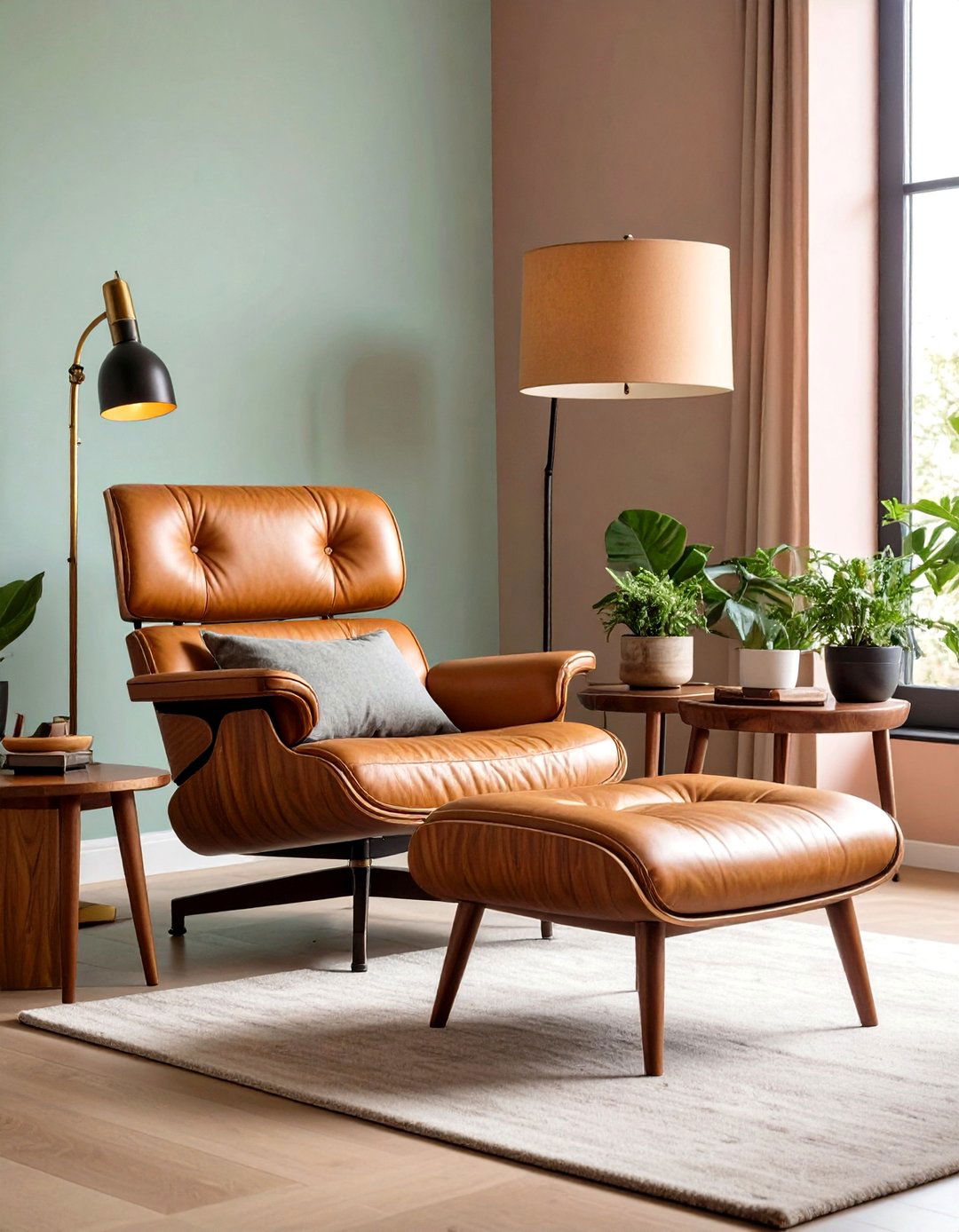
Certainly, nothing telegraphs mid-century sophistication faster than the 1956 Eames lounge chair and ottoman. Galerie’s design history notes its baseball-mitt comfort and swivel base, qualities that still make it a reading-corner hero. Position the chair under a pool of warm task light and let its molded-rosewood shell contrast a pastel wall. Even high-quality reproductions carry the ergonomic tilt and replaceable cushions of the original, so you can enjoy collector looks without auction prices.
6. Pop-Color Fiberglass Shell Chairs
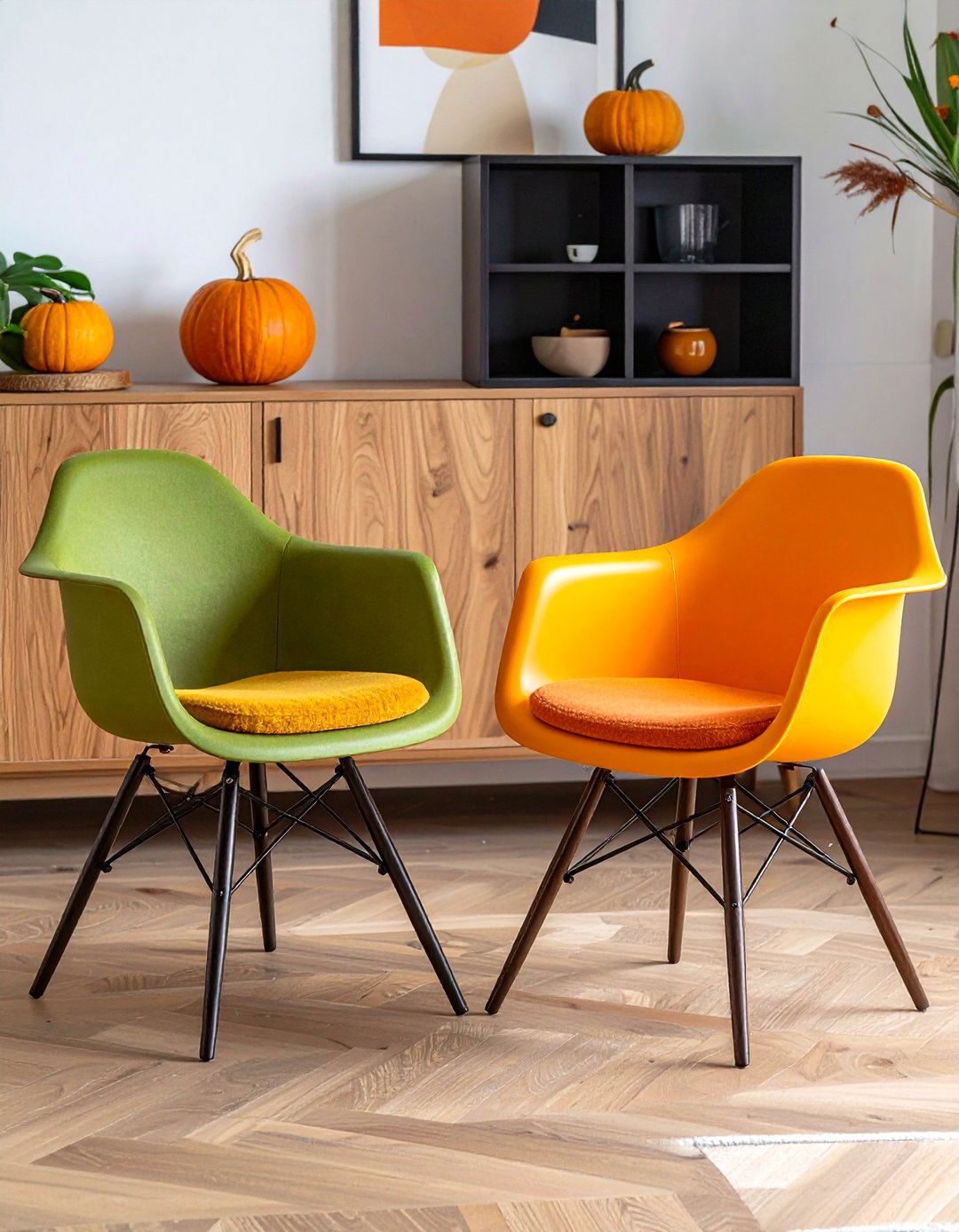
Surprisingly durable fiberglass side chairs—pioneered by Herman Miller—were kitchen classics that migrate beautifully into a living room. Pairs in avocado or pumpkin flank a teak credenza, injecting sculpture and extra seating without visual heaviness. Vintage listings reveal their rubber-shock mounts and wire “Eiffel” bases still outperform many plastic contemporaries. Swap original metal glides for felt pads to protect modern hardwood floors and you’ve scored a talking-point perch that stacks easily when floor space is at a premium.
7. Dazzling Sputnik Chandelier
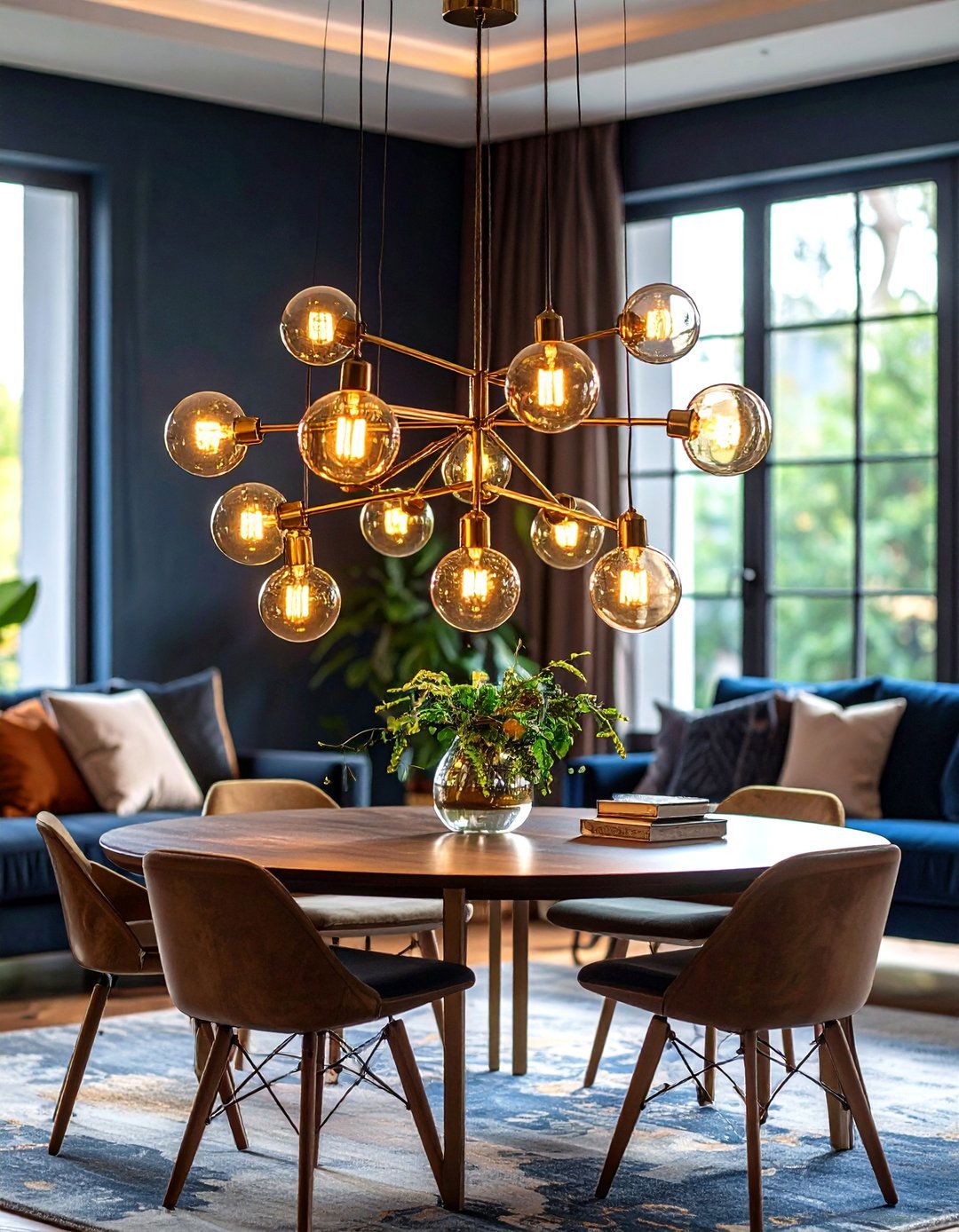
A, the chandelier that literally borrowed its name from the 1957 satellite, sends mid-century star-power across the ceiling. 1stDibs documents versions by Gino Sarfatti with brass spokes and globe bulbs radiating atomic optimism. Hang one 30–34 inches above a coffee table so filament reflections skim tabletop décor, and fit dimmable LEDs to modernize energy use without sacrificing sparkle. An all-black or nickel finish updates the look for contemporary minimalists while keeping the iconic burst silhouette intact.
8. Graceful Arco Floor Lamp Arc
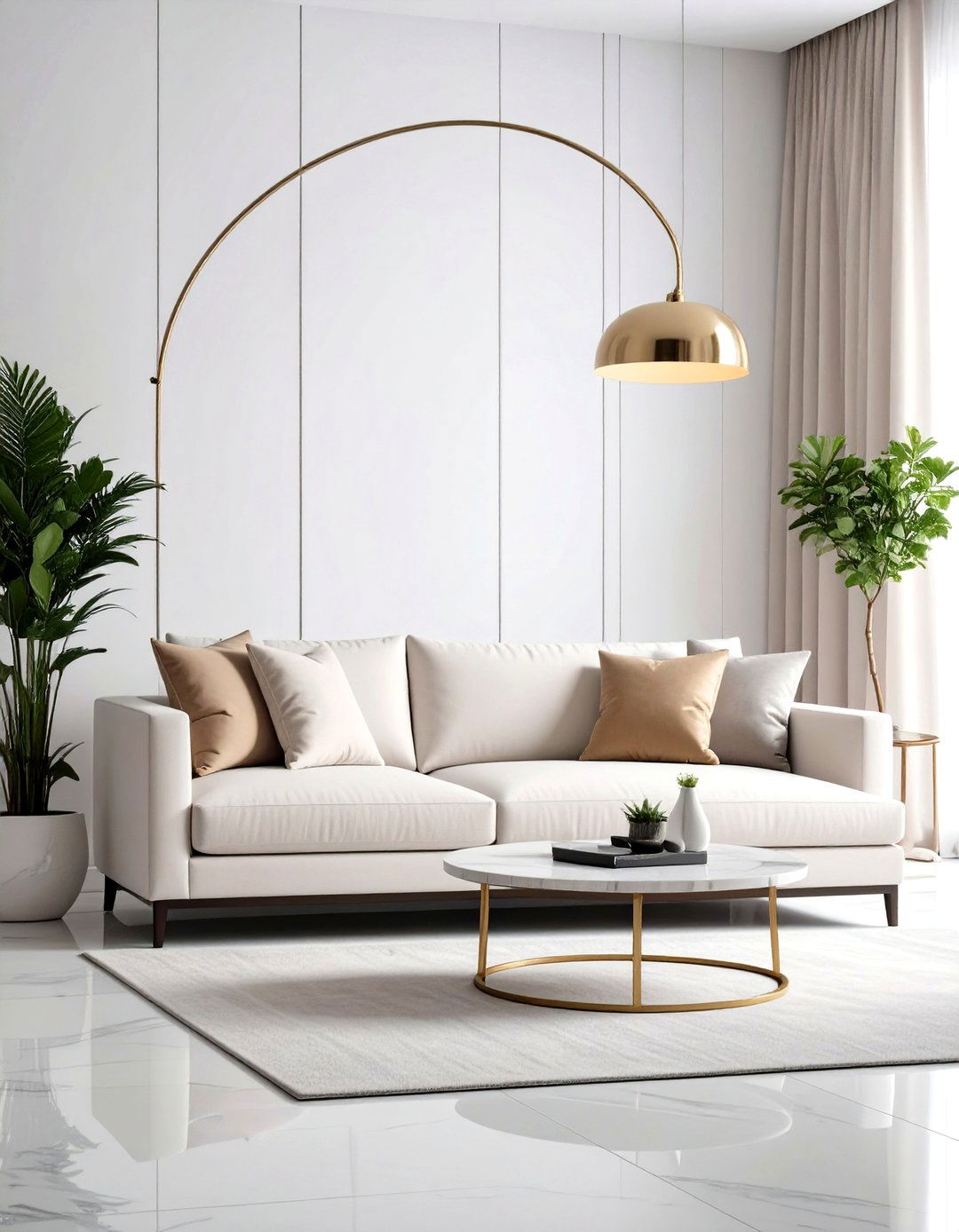
This living room staple, designed in 1962, pushes the decade’s design envelope yet blends perfectly with 1950s furniture. Architectural Digest recounts how its Carrara-marble base and stainless arc cast overhead light without ceiling wiring—ideal for renters chasing mid-century atmosphere. Place the base behind the sofa so the shade hovers above the seating conversation zone, freeing tabletops for cocktails and coffee-table books. A smart-bulb upgrade lets you shift from warm evening glow to cool daytime task lighting at a tap.
9. Starburst Clock Statement
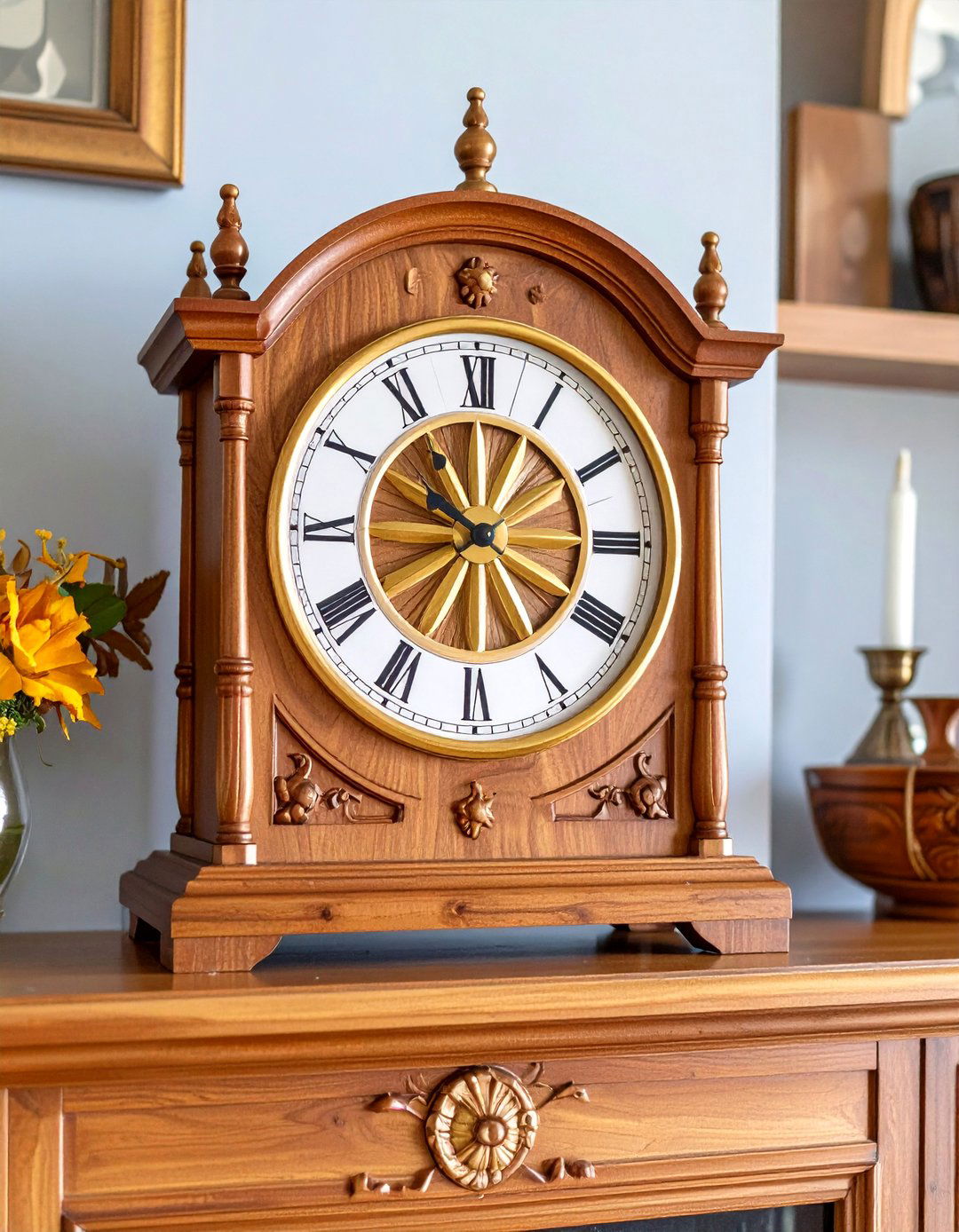
Certainly, the sunburst—or starburst—clock by George Nelson remains the quintessential 1950s wall jewel. Vitra’s catalog notes versions in walnut, brass, or riotous rainbow spokes, any of which inject kinetic energy above a mantel. Center one at average eye level (about 60 inches from the floor) to anchor gallery walls and synchronize the whole space literally and stylistically. Battery-quartz mechanisms keep time silently, so retro aesthetics don’t come with a distracting tick.
10. Barkcloth Curtain Drama
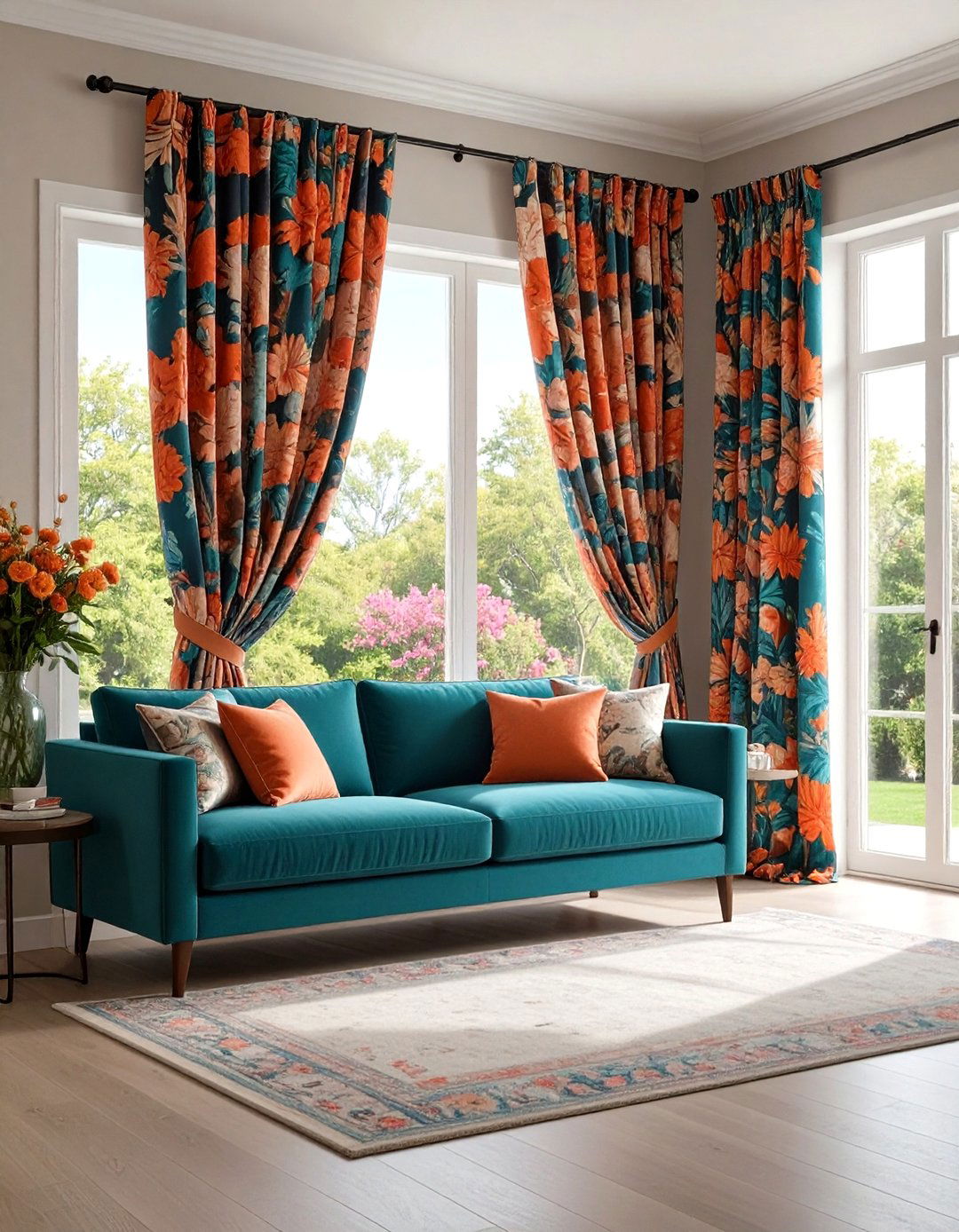
With their nubby texture and atomic boomerang prints, barkcloth drapes frame 1950s picture windows like wearable art. Etsy listings show panels in coral, teal, or tiki-tropical motifs that soften hard furniture lines while adding acoustic heft. Line them with modern blackout fabric to protect vintage fibers from UV and boost energy efficiency. If originals are scarce, reproduction yardage lets DIYers sew custom lengths that skim just above the floor, delivering a tailored, era-faithful finish.
11. Atomic-Pattern Wallpaper Pop
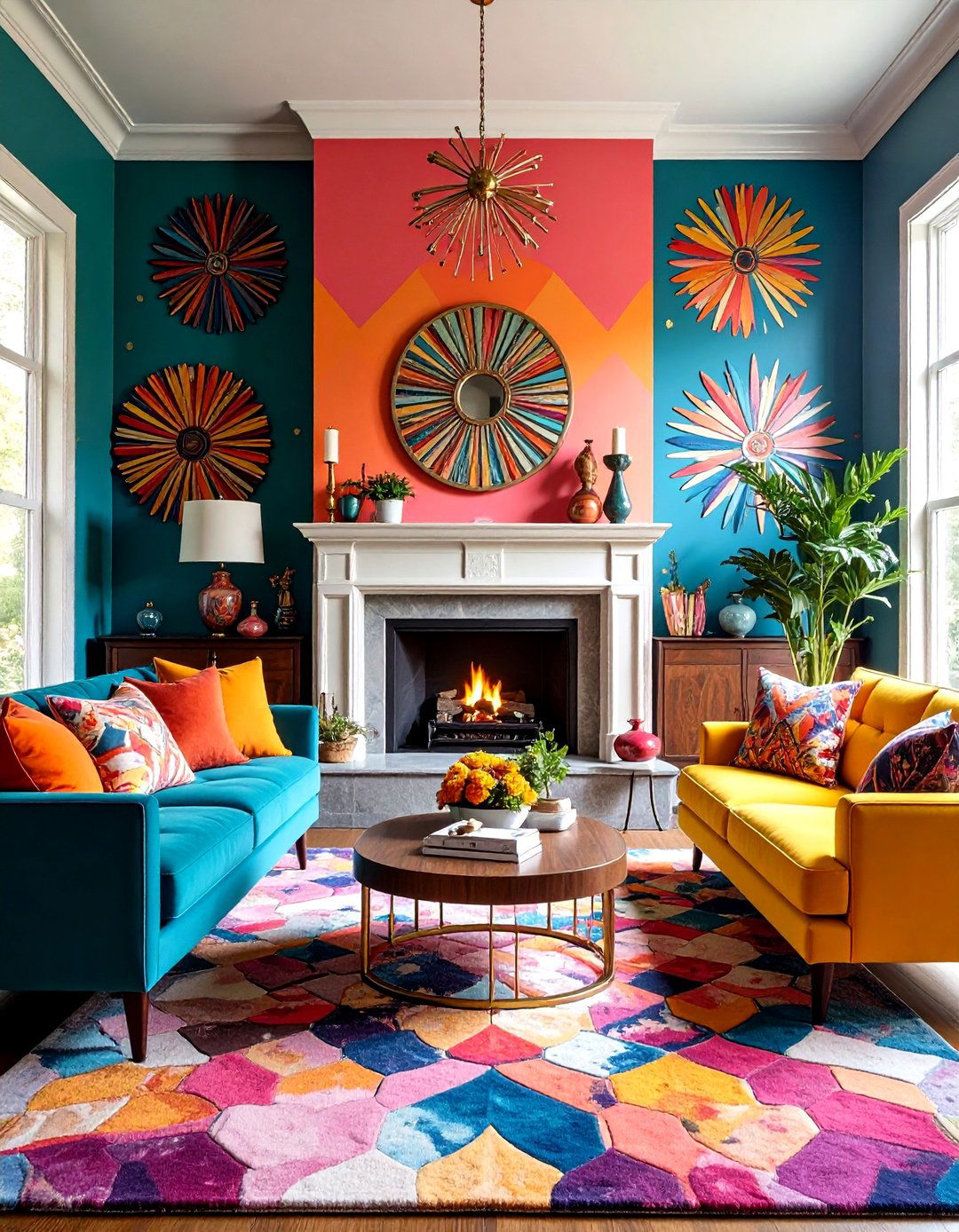
For an instant blast of period personality, wrap a single living-room wall in reproduction 1950s wallpaper—think boomerangs, starbursts, or abstract geometrics. Designer Wallcoverings’ collection nods to post-war prosperity with vibrant repeats that hold up to humid climates thanks to contemporary vinyl substrates. Pair busy prints with solid upholstery so the room breathes, and reserve the loudest pattern for a fireplace surround or alcove to avoid visual overload.
12. Checkerboard & Linoleum Floor Flair
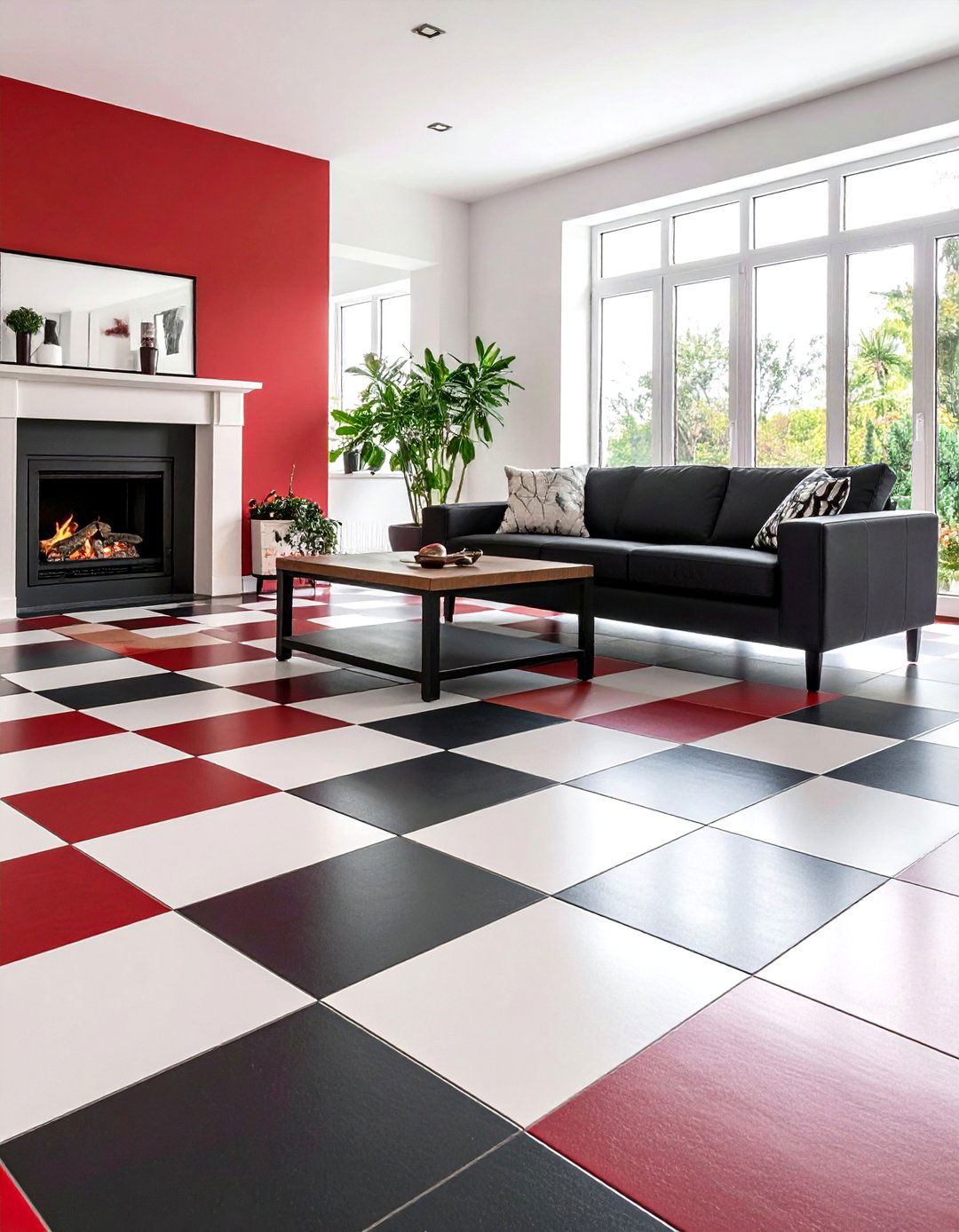
Before hardwood reigned, bold linoleum tiles brought playful practicality to family zones. Click Americana’s archive shows oversized stripes or checkerboards in cherry red and charcoal, creating optical movement underfoot. Today’s sheet-vinyl reproductions click together with no glue, resisting spills and pets while honoring vintage aesthetics. Lay tiles on the diagonal to widen narrow living rooms or border the perimeter in a contrasting color for a “carpet” effect without fibers.
13. Sleek Teak Sideboard Storage
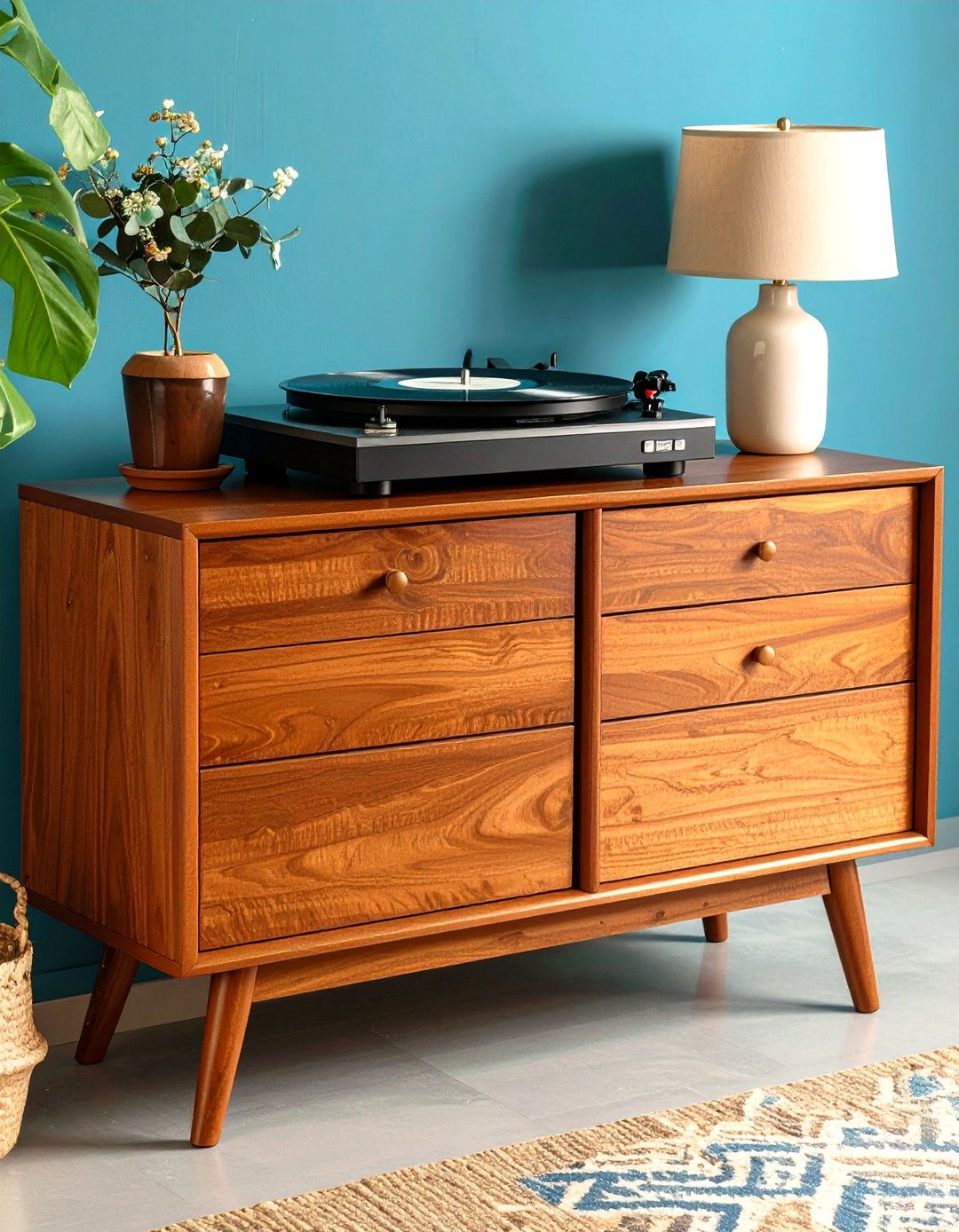
A low teak credenza—often Danish—embodies the 1950s belief that storage should float lightly. Chairish inventories reveal sliding-door units under 20 inches deep, perfect for media components or board-game stashes. Oil the wood annually to keep the honey tone rich, and top with a ceramic lamp or record player for authentic styling. Integrated finger pulls eliminate hardware clutter, letting the linear grain shine and unifying mixed woods elsewhere in the room.
14. Vintage Television Console Wow
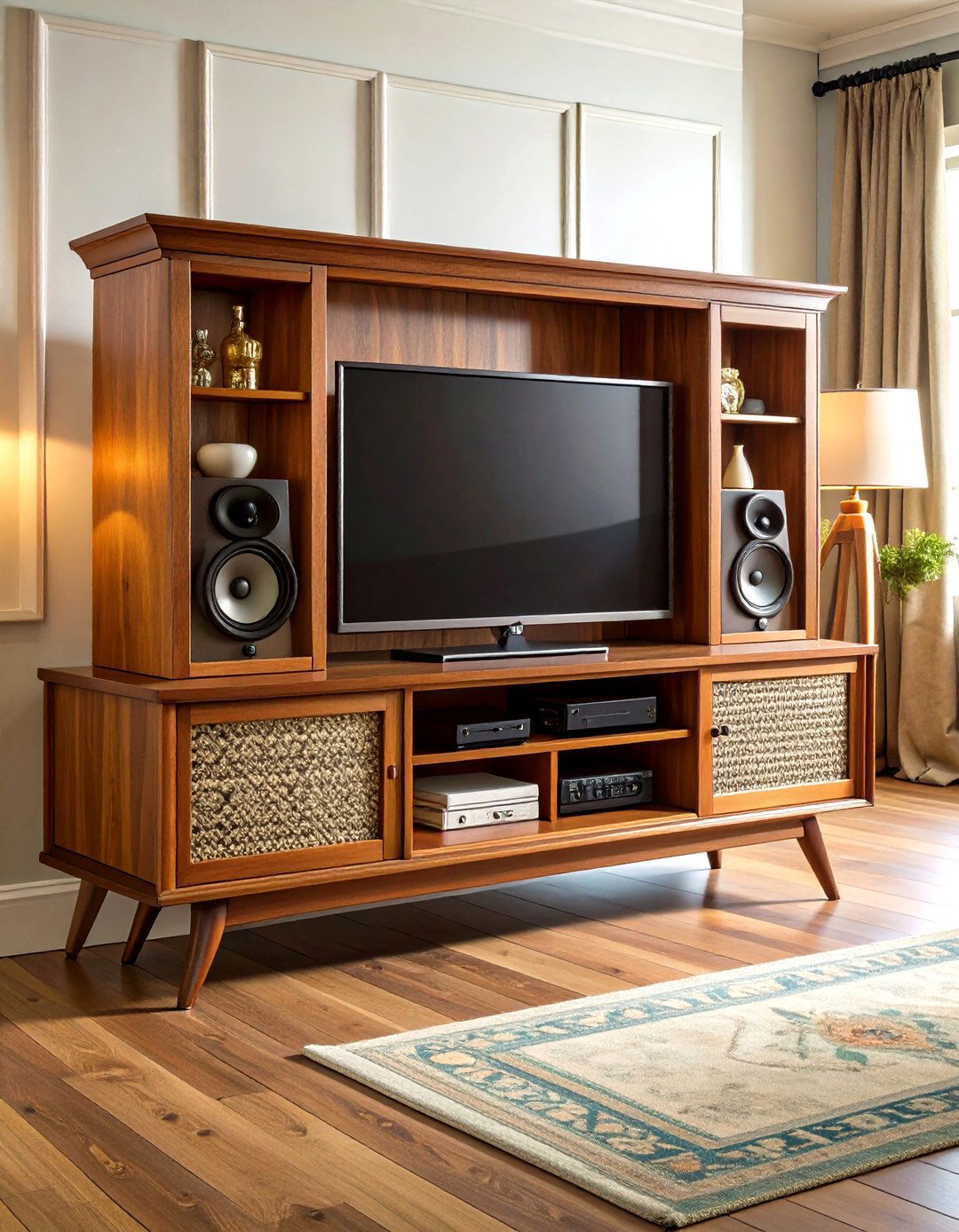
Those glossy wood television cabinets with splayed legs are more than nostalgic eye candy—they double as hidden bars, record storage, or even housings for modern flat-screens mounted inside. 1stDibs lists dozens of 1950s consoles ready for retrofit; simply gut old tubes, reinforce shelves, and slide in today’s tech. Retaining original fabric speaker grilles preserves authenticity while allowing sound-bar audio to pass through. It’s a show-stopping blend of mid-century form and twenty-first-century function.
15. Rolling Rattan Bar Cart
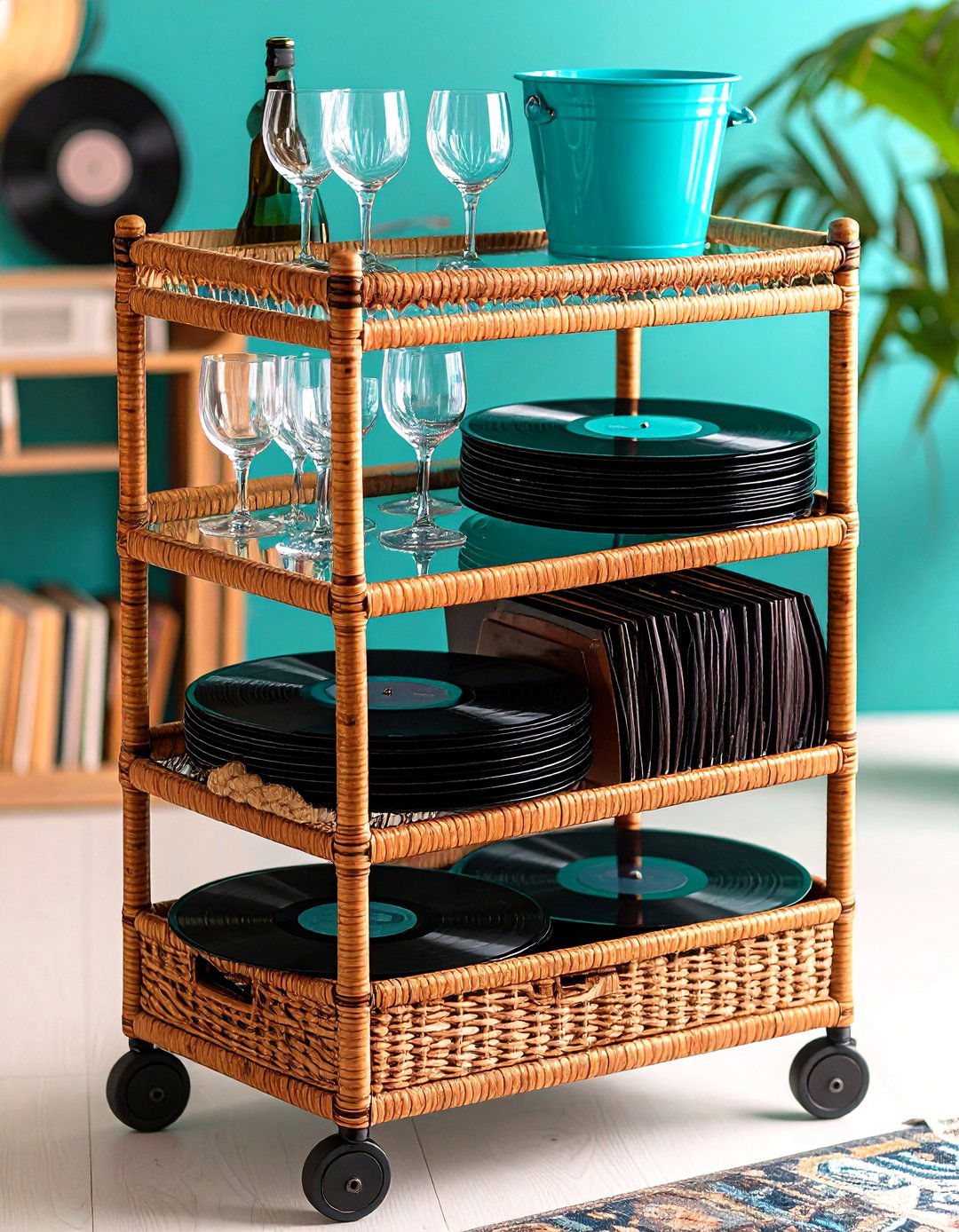
Looking for instant party vibes? A rattan or metal three-tier bar cart—often seen in 1950s cocktail culture—slots neatly beside a sofa arm. Pinterest references highlight smoked-glass shelves and caster wheels that make rearranging for gatherings effortless. Style the top with period-correct coupe glasses, the middle with a teal ice bucket, and reserve bottom storage for vinyl records or board games. The cart becomes both décor and mobile hospitality station, perfect for compact apartments.
16. Sculptural Room-Divider Screens
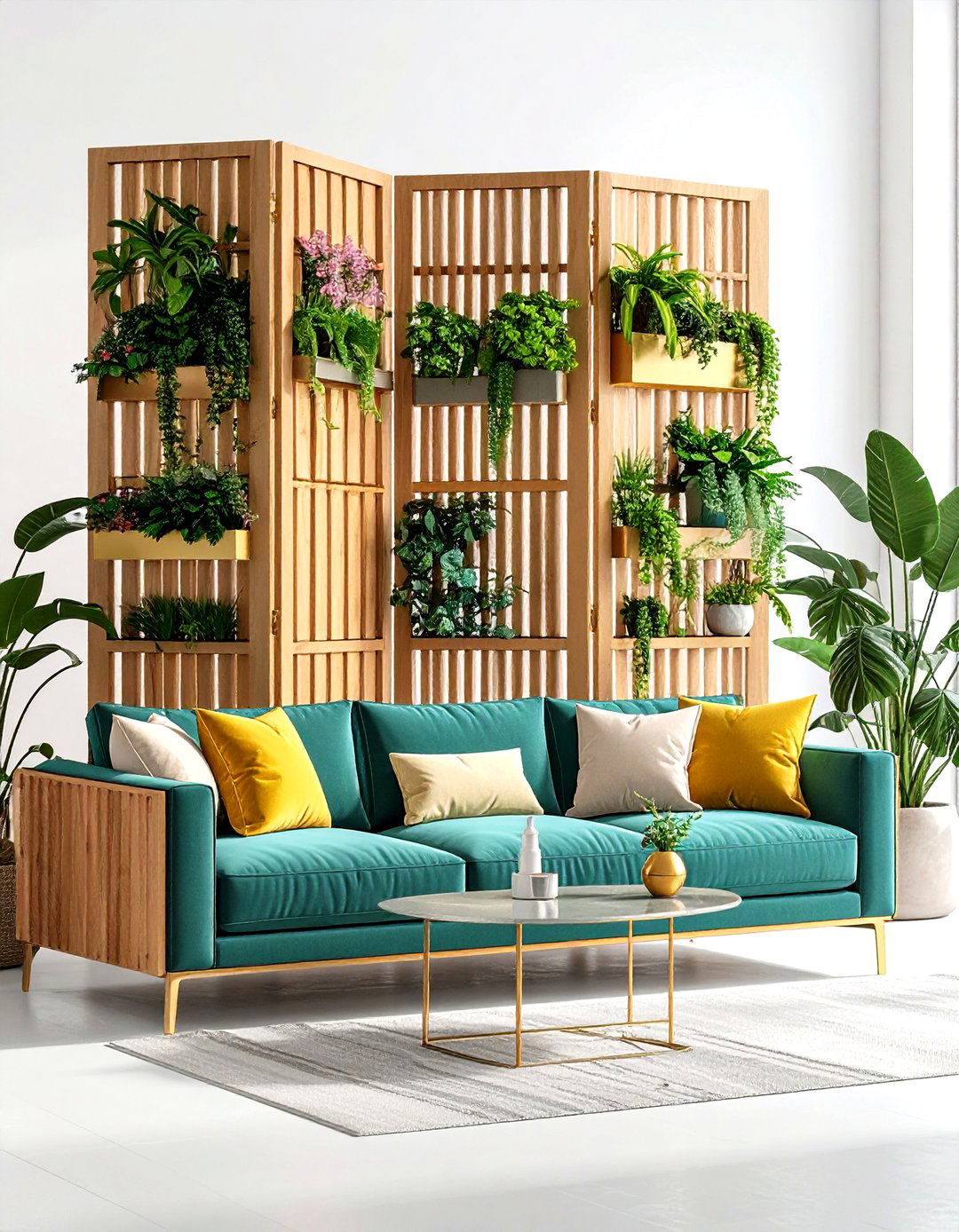
Mid-century architects loved flexible spaces, so freestanding screens with planter boxes or brass inlay flourished. Vintage dividers on 1stDibs demonstrate how a three-panel unit instantly zones a work-from-home corner without drywall. Choose open slats to maintain sight-lines and daylight, or upholster panels in atomic fabric for acoustic privacy. Hinged designs fold flat when you need the full footprint back for game night.
17. Warm Wood-Panel Accent Wall
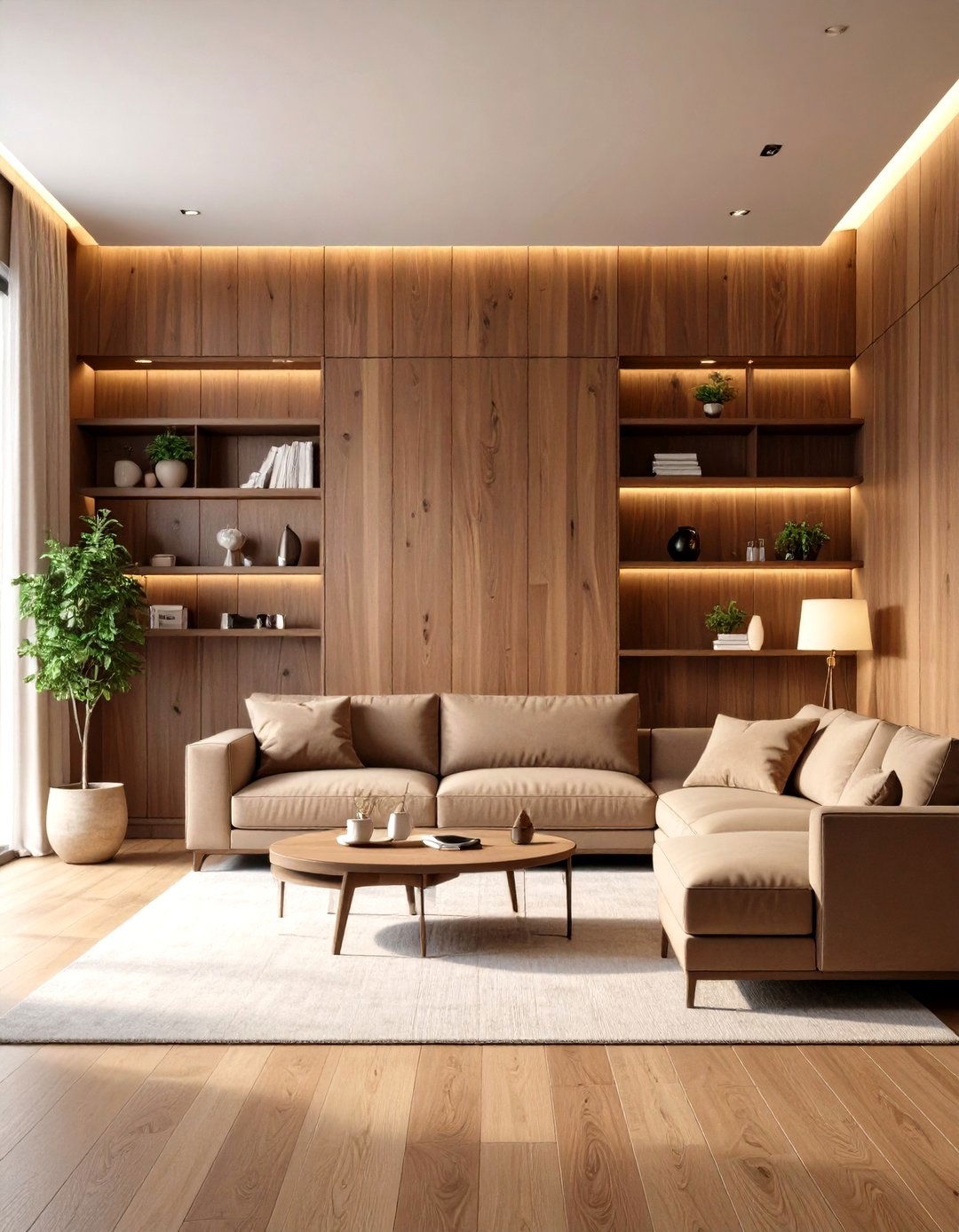
Despite decades of paint trends, original mahogany or hemlock paneling still reads cozy, not dated, when balanced with light furniture. RetroDen’s makeover diary shows how sanding and satin sealer wake up the grain and eliminate orange undertones. Mount floating shelves directly into studs to avoid visible brackets, and contrast the rich timber with pastel upholstery so the room doesn’t feel like a den. Add uplighting at floor level to graze the panels and highlight texture.
18. Rubber Plant Greenery
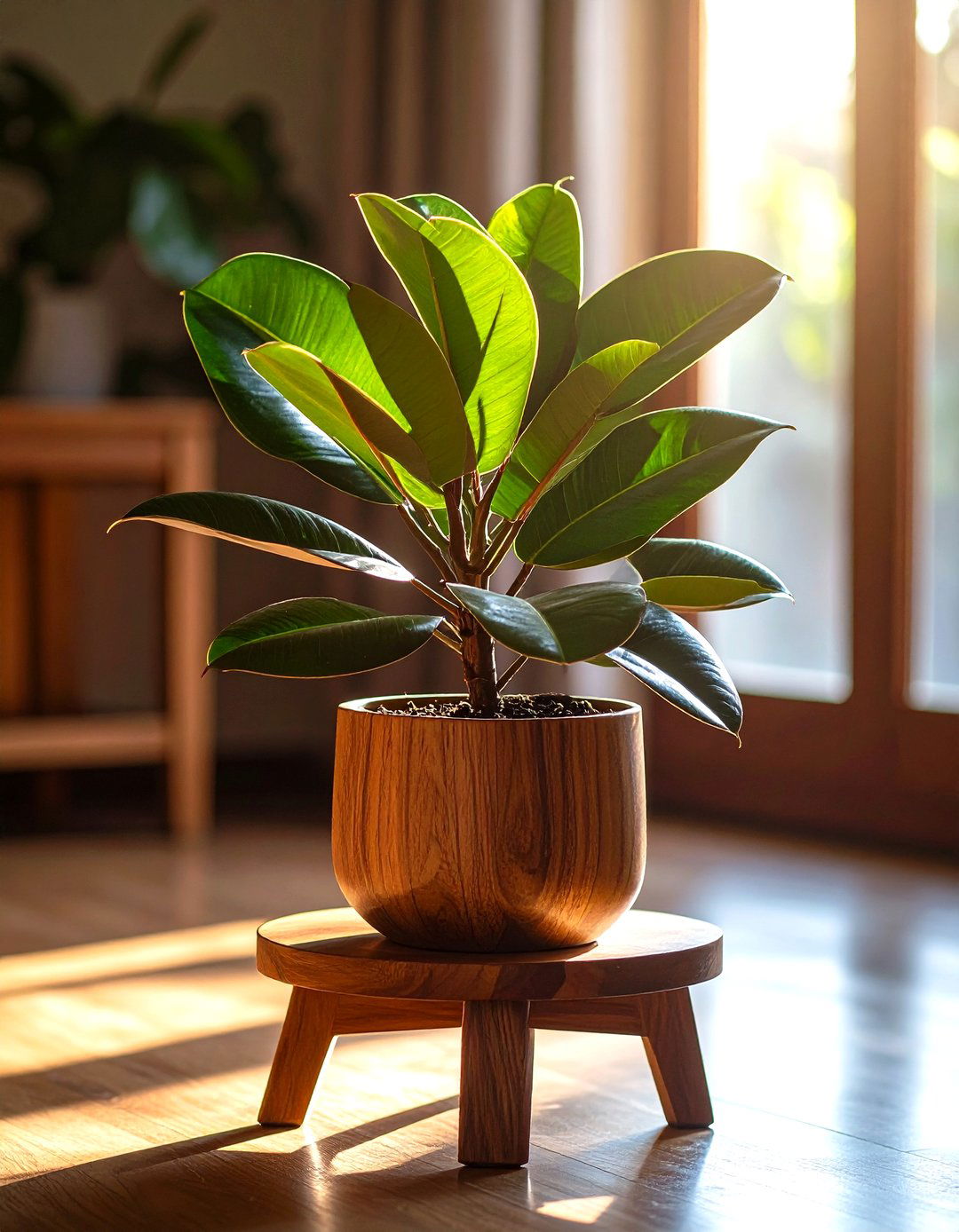
Bringing live foliage into a 1950s living room isn’t a 2020s invention—rubber plants and monsteras were already fashionable then. Garden Design notes the Ficus elastica’s glossy leaves echo mid-century love of bold, graphic forms while tolerating low light. Pop one in a tapered ceramic pot on a teak stand for height that balances low furniture lines. Wipe leaves weekly to keep that coveted vinyl-like shine and support the plant’s air-purifying prowess.
19. Bold Geometric Rug Layer

Certainly, bare floors feel chilly under atomic décor, so anchor seating with a geometric wool rug in mustard, aqua, and charcoal. Society6’s 1950s collection features starburst and boomerang motifs that echo wallpaper accents without repeating identical patterns. Position the rug so front sofa legs rest on its edge, visually tying the furniture group together. Flat-weave construction mirrors period originals yet slides effortlessly under rolling bar carts or coffee tables.
20. Graphic Artwork Gallery
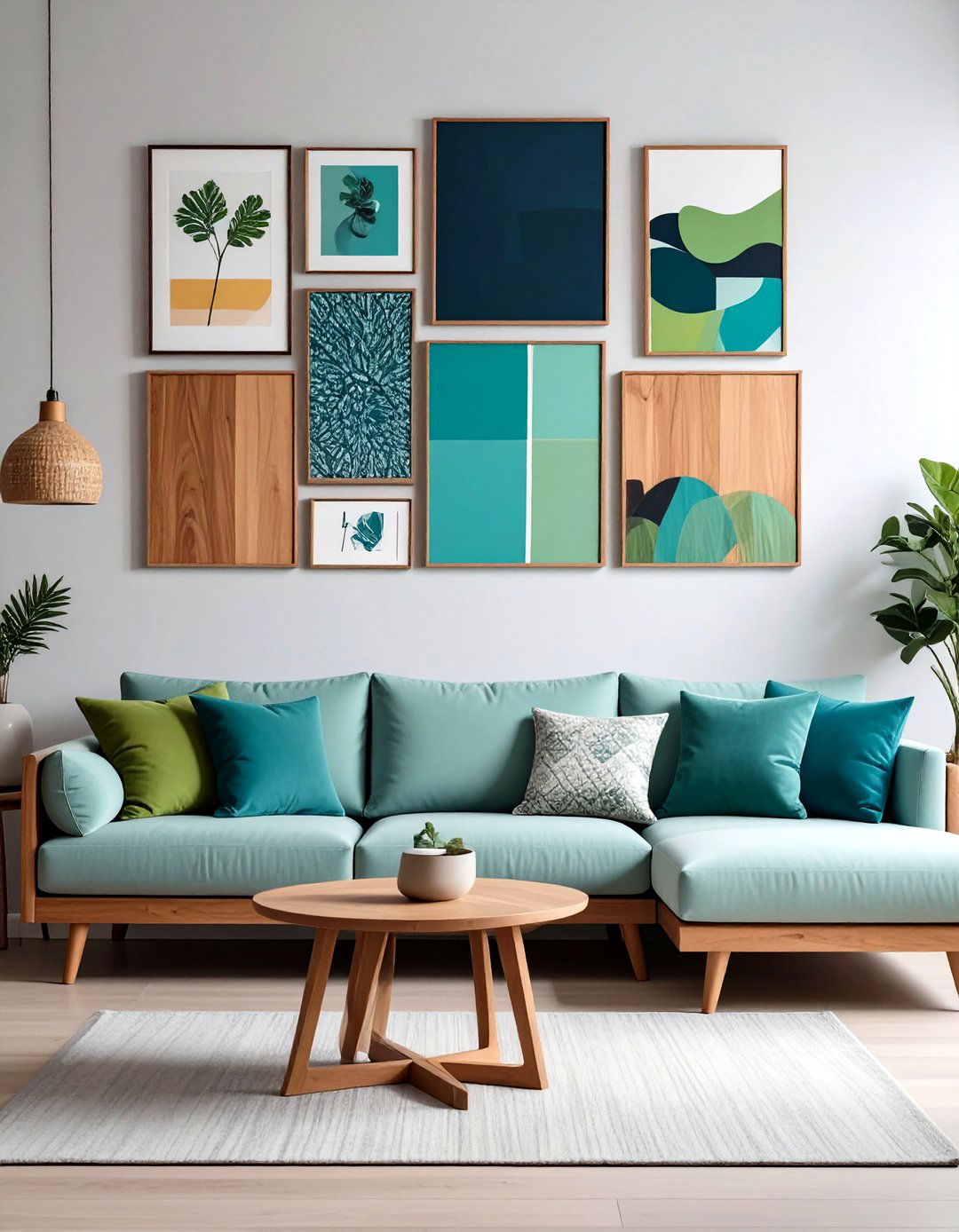
Finally, nothing completes a mid-century living room like abstract prints—think Calder-esque mobiles or jazz-album cover art. Lord Decor’s style guide emphasises statement walls that anchor the room while remaining affordable. Cluster three or five pieces in mismatched teak frames above the sofa, keeping the outer silhouette rectangular for order. Choose colors that echo your palette—turquoise splashes under a chartreuse mat, for instance—to pull every previous idea into one harmonious panorama.
Conclusion:
Embracing 1950s living-room design is less about museum perfection and more about blending pastel optimism, streamlined furniture, and atomic accents with today’s comfort. From starburst clocks marking time to rubber plants quietly cleaning the air, each idea above offers an easy entry point into mid-century magic—mix a few or layer them all and watch your space swing into a timeless, joyful groove.


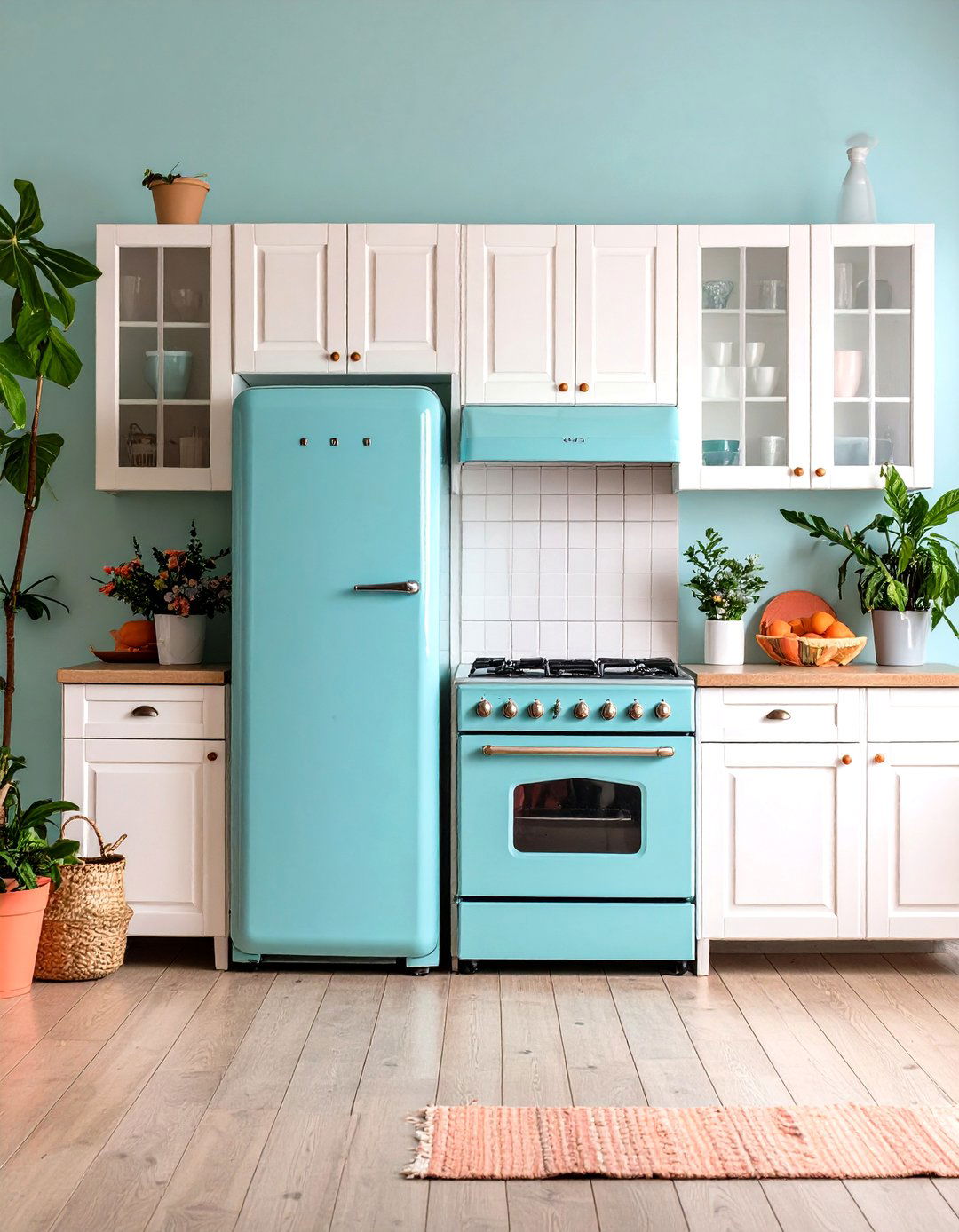
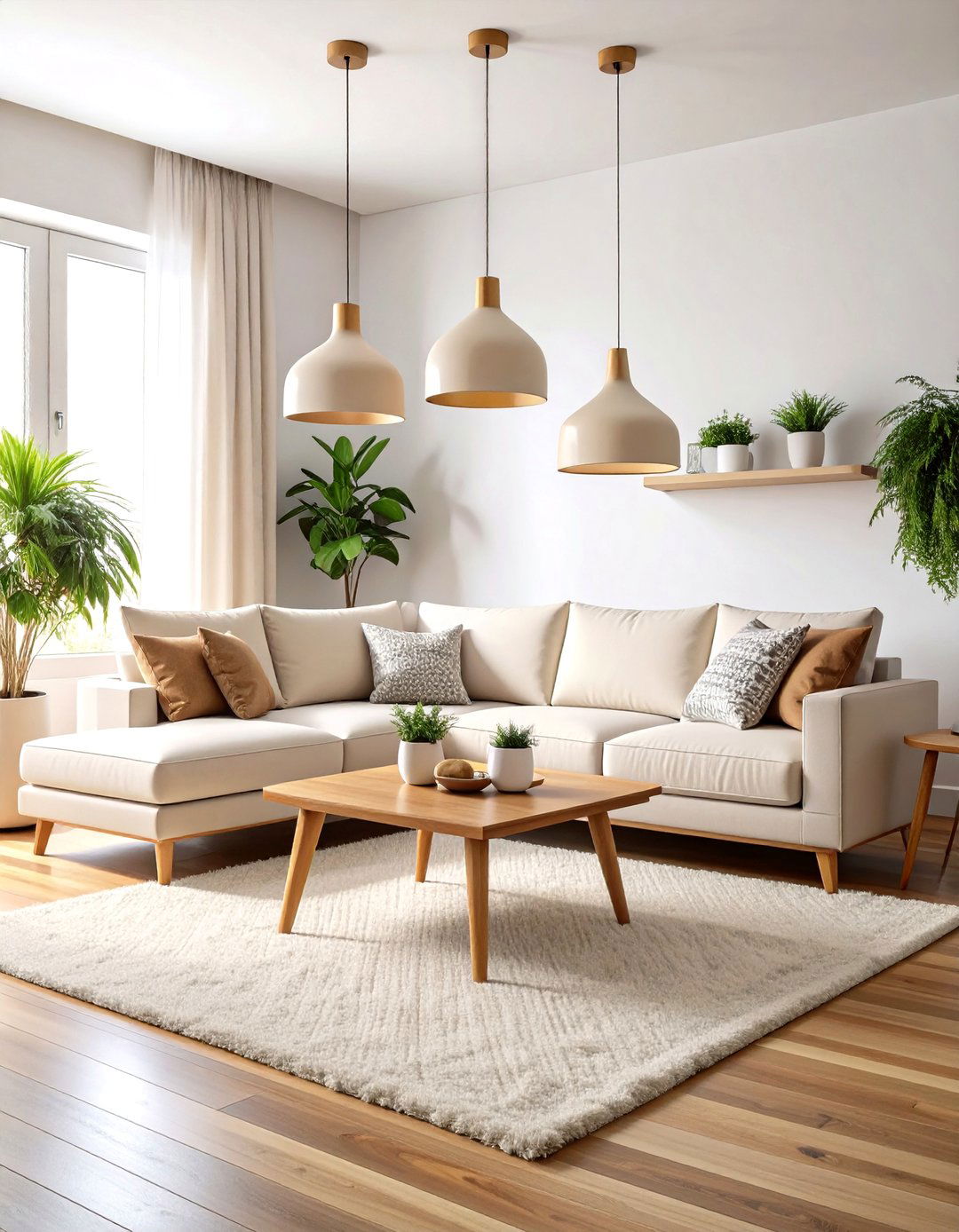
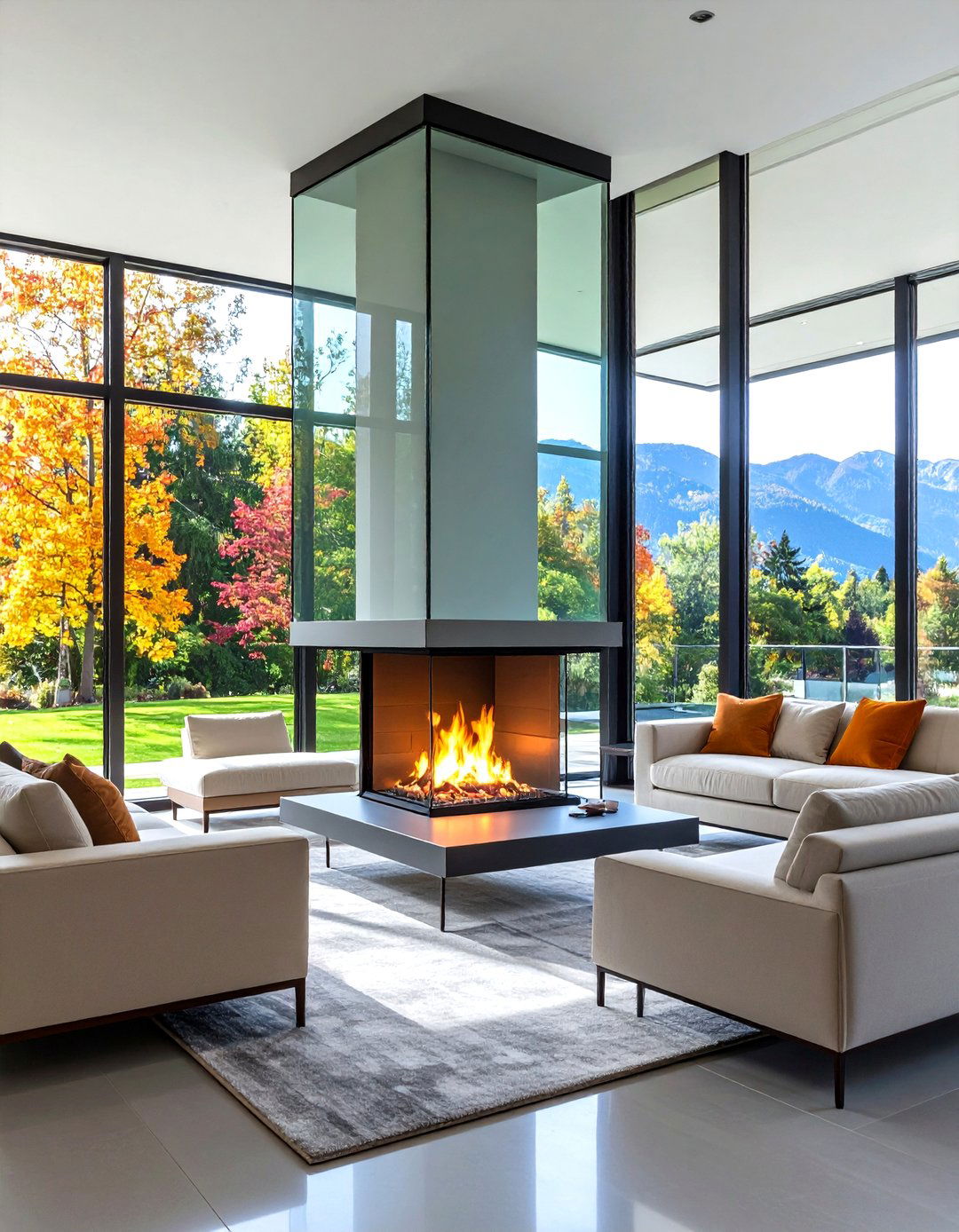
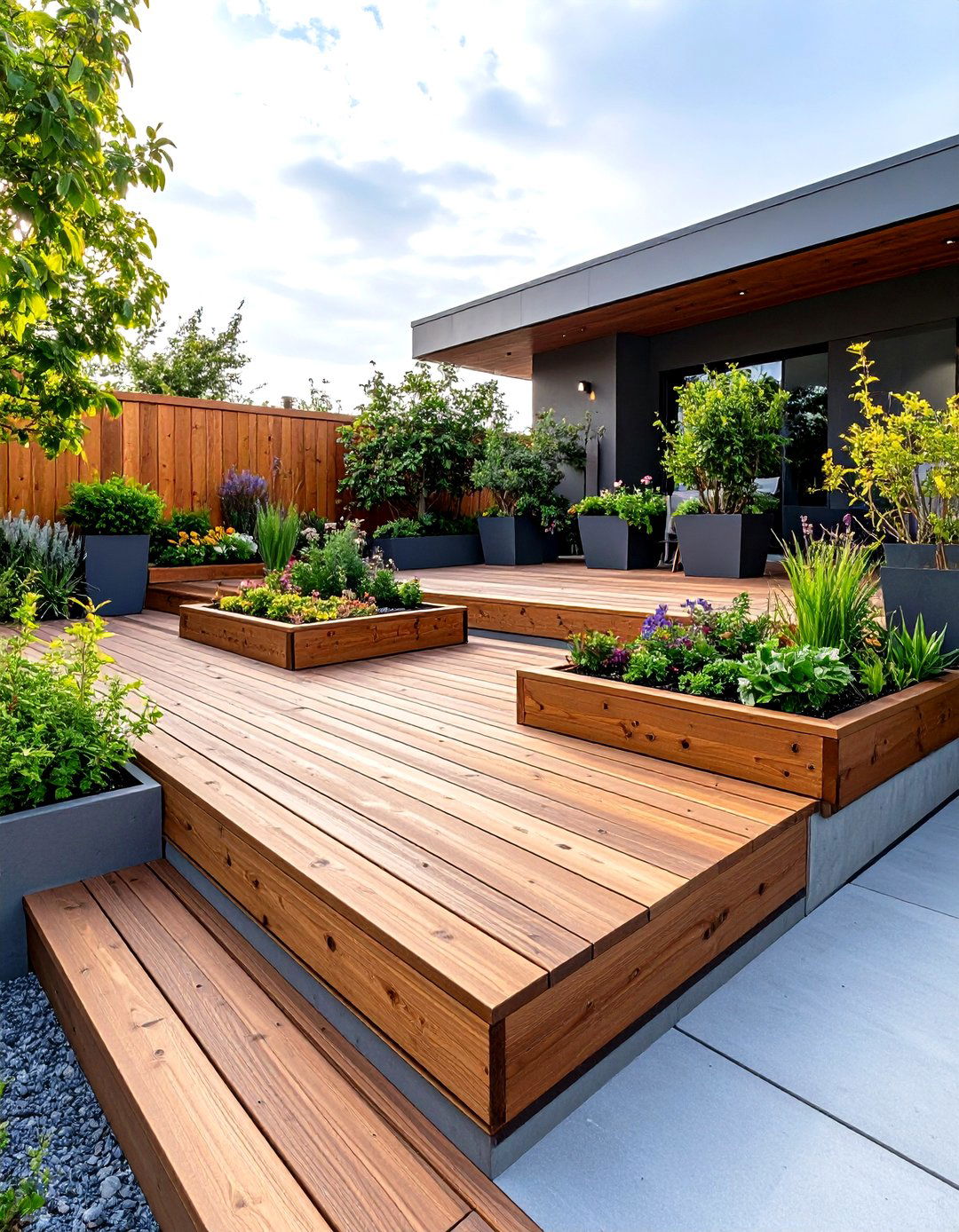
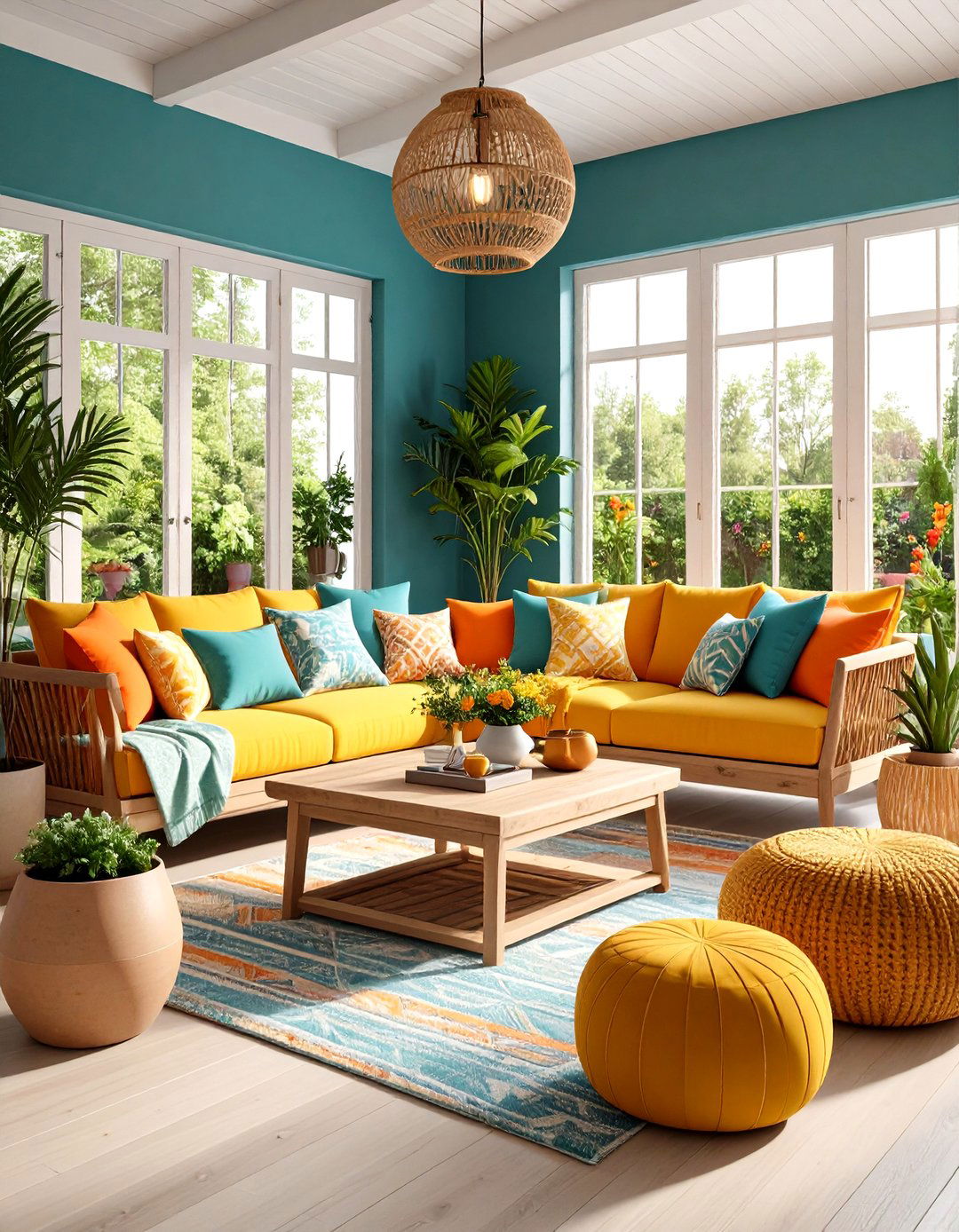
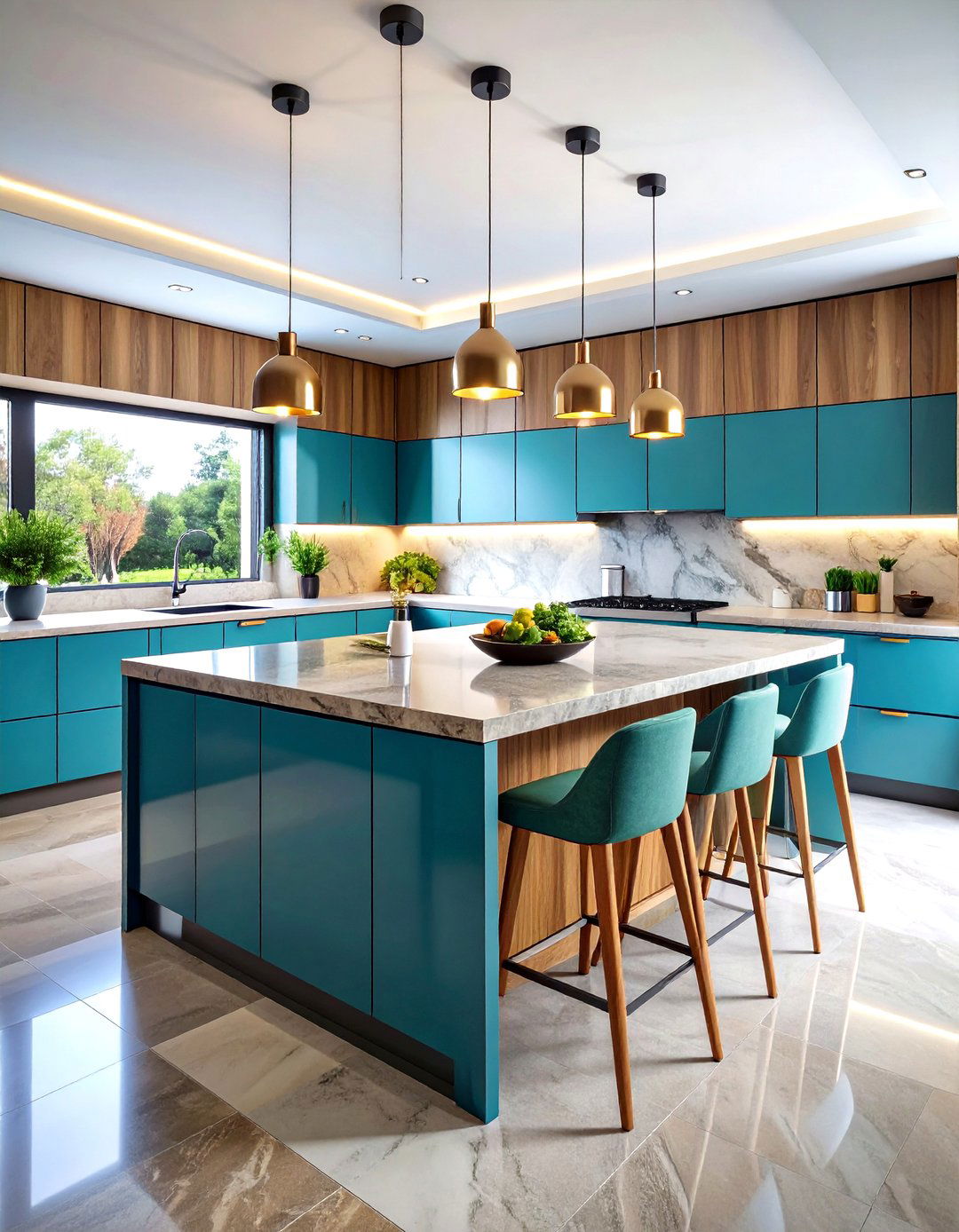
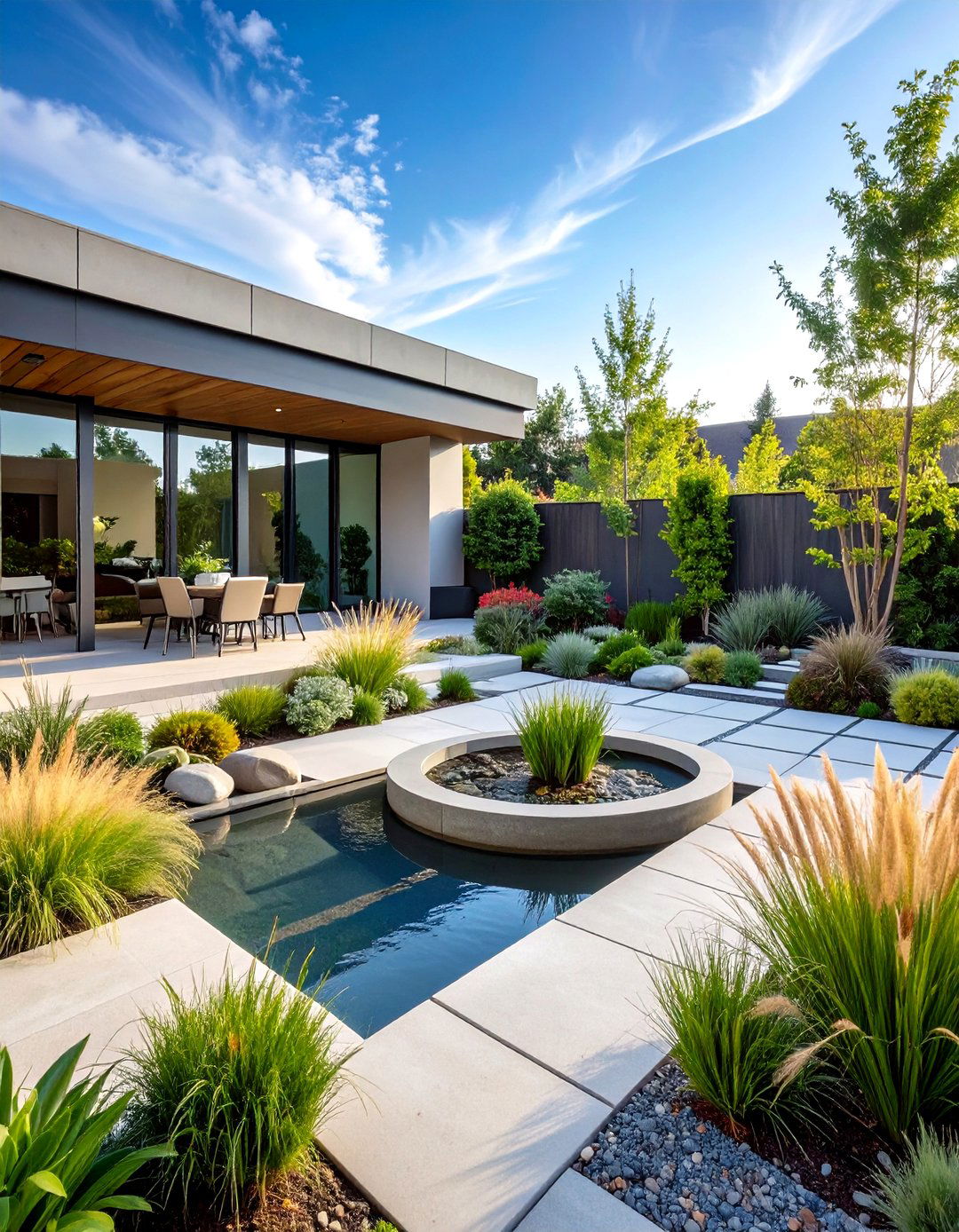
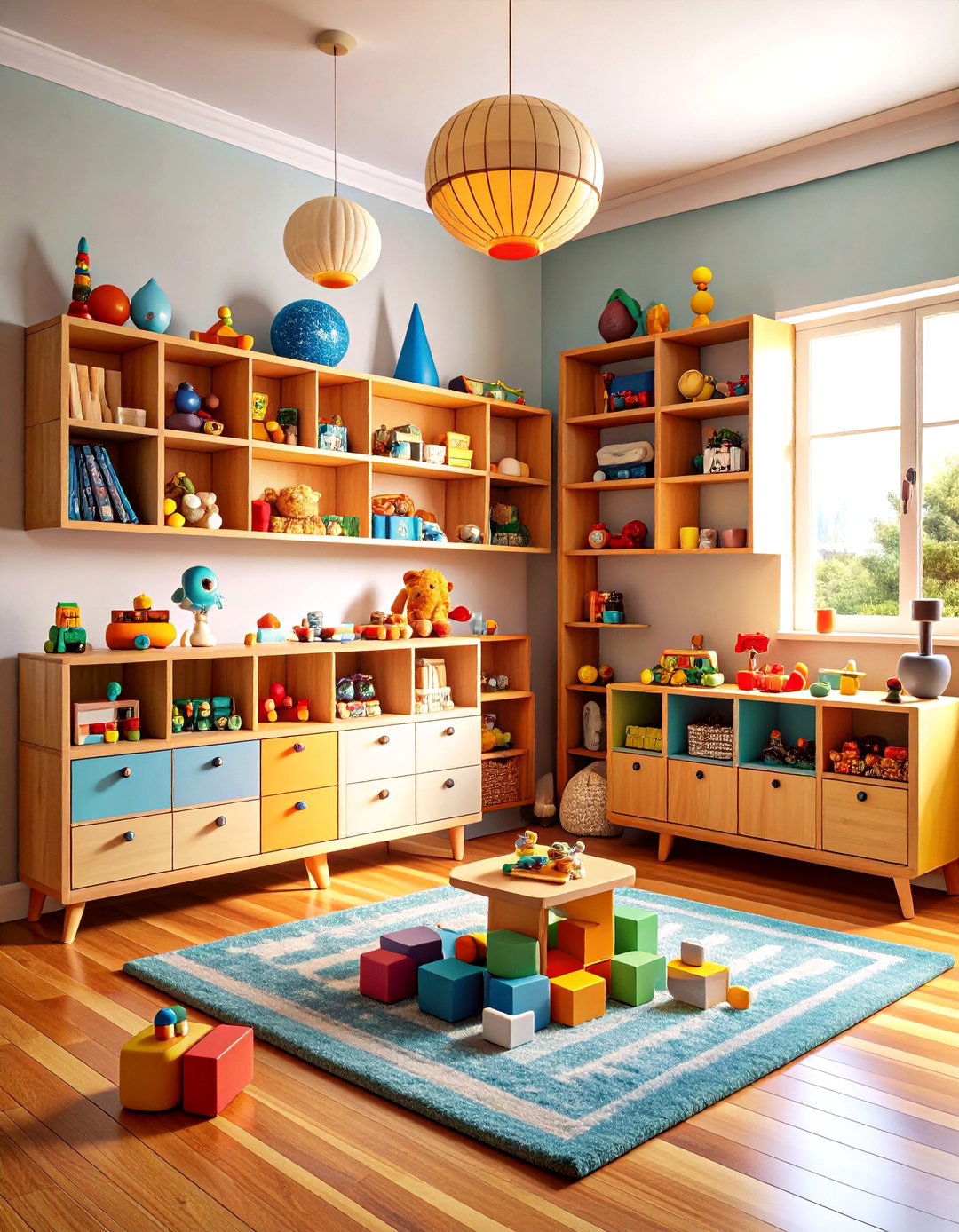
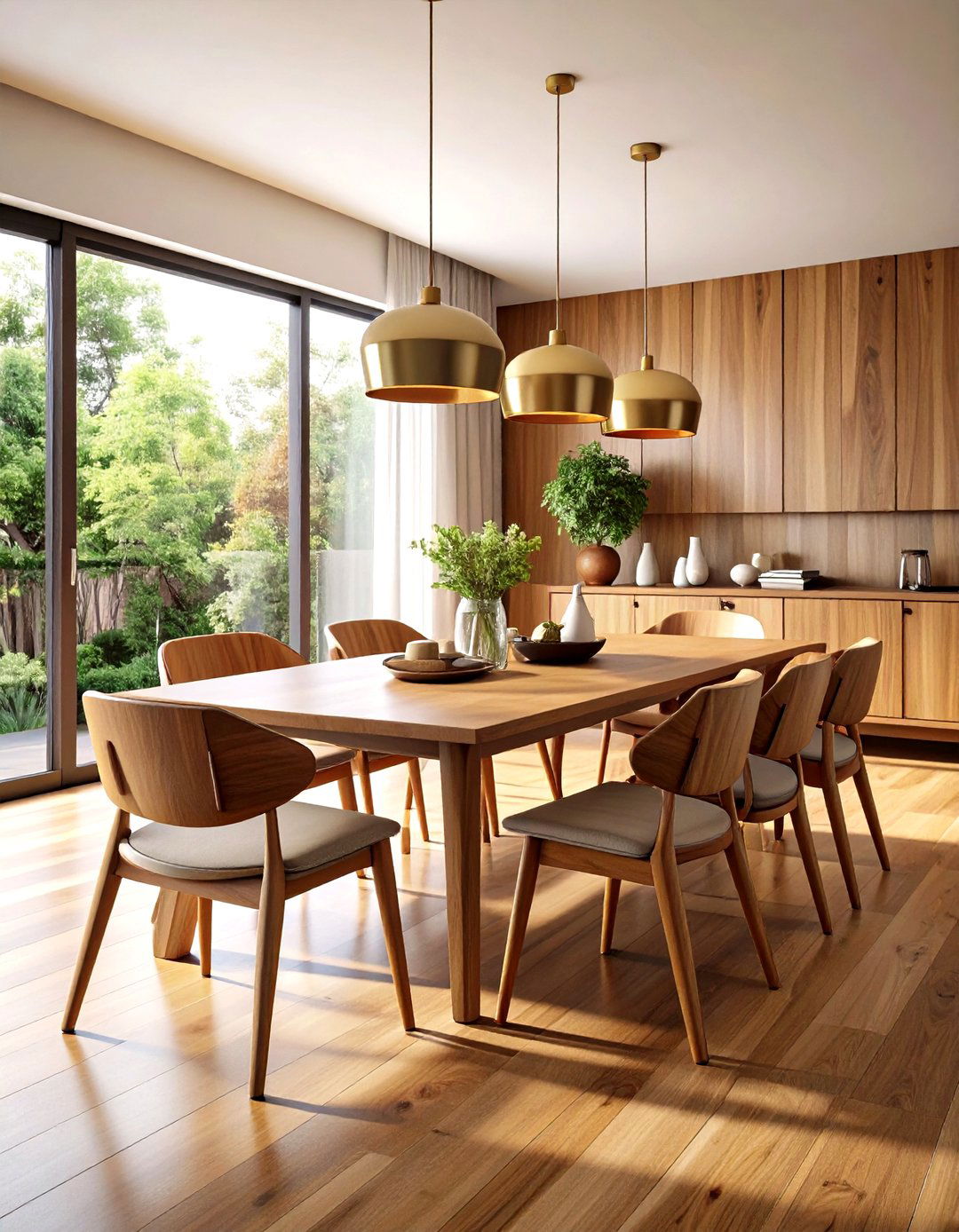

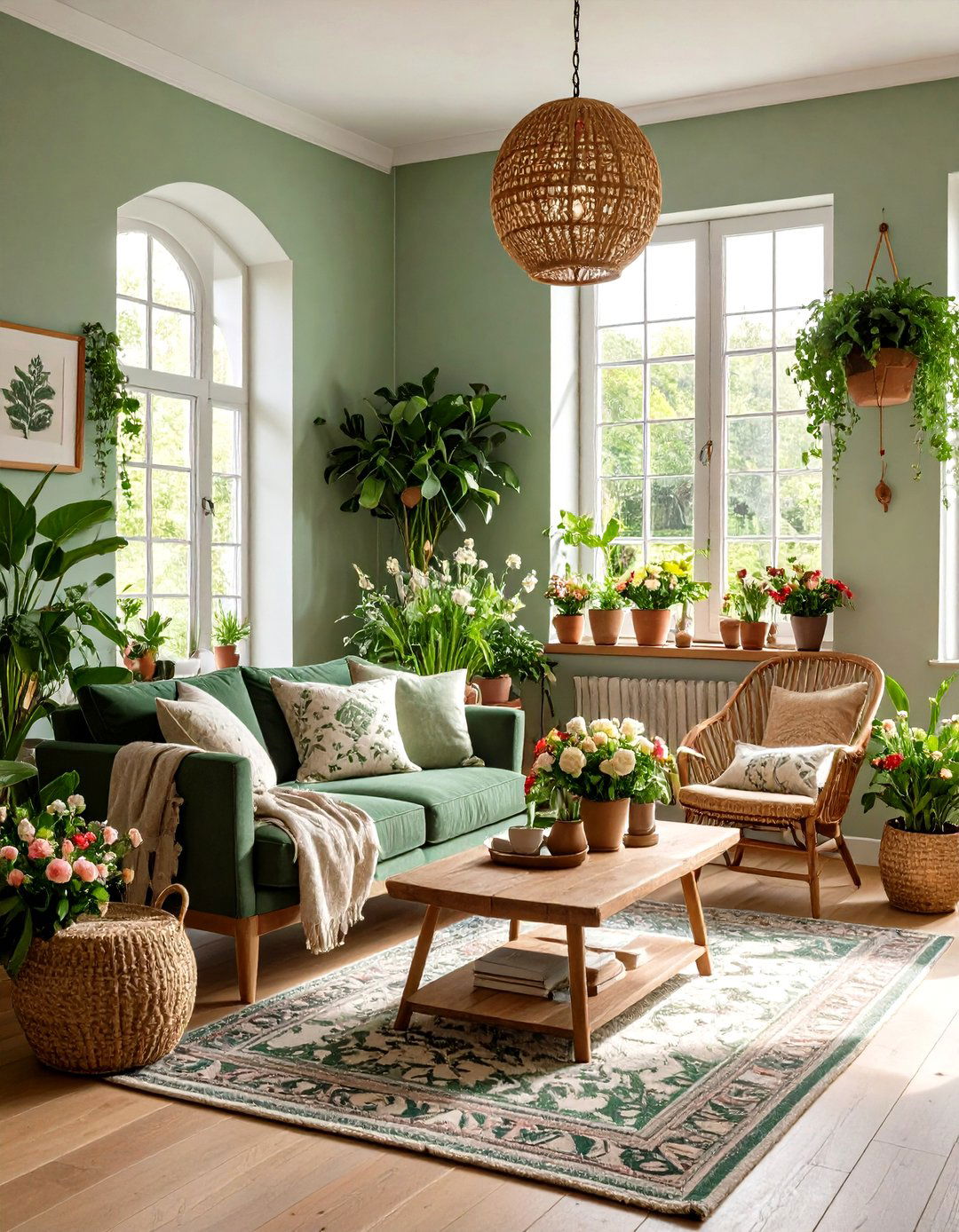

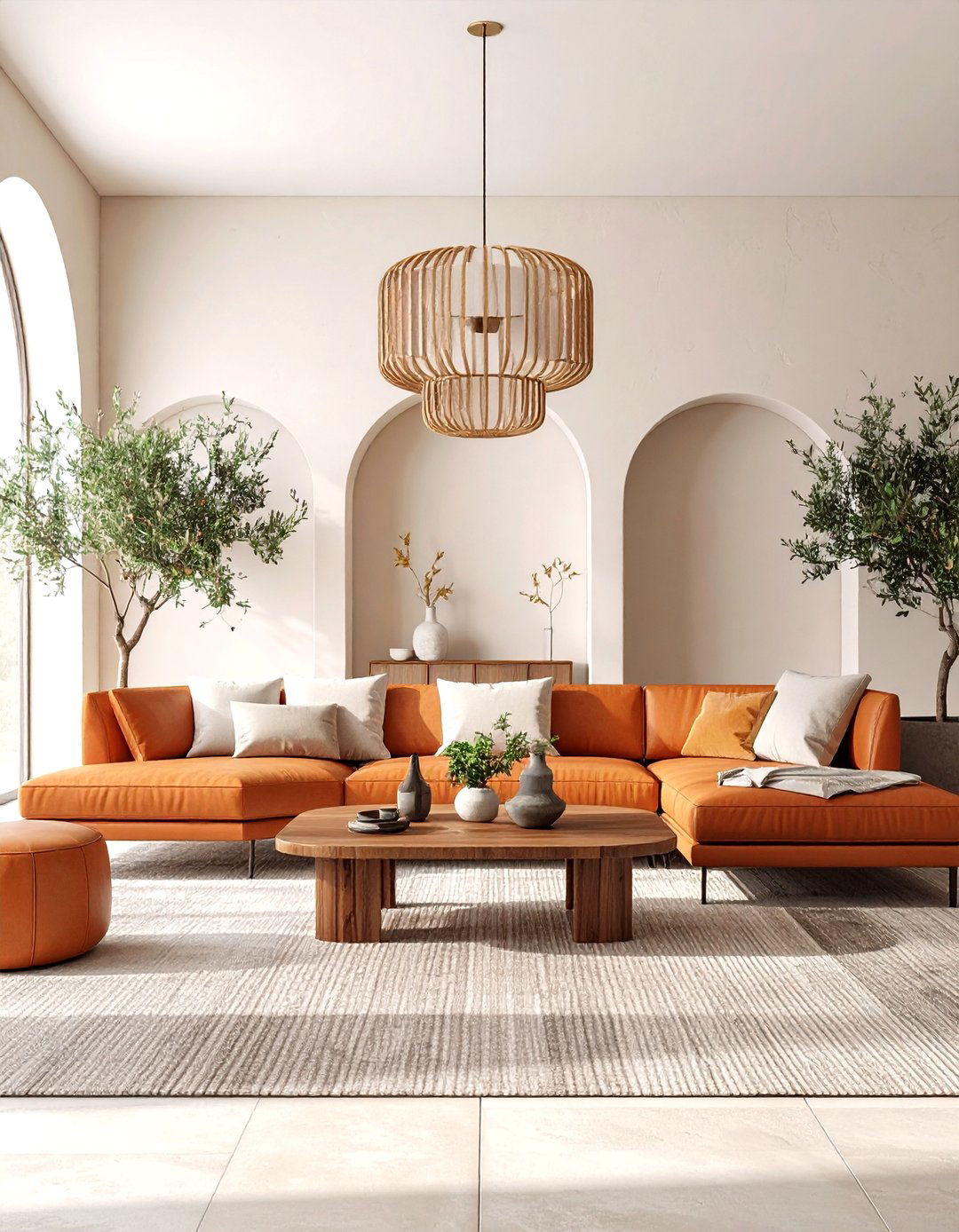
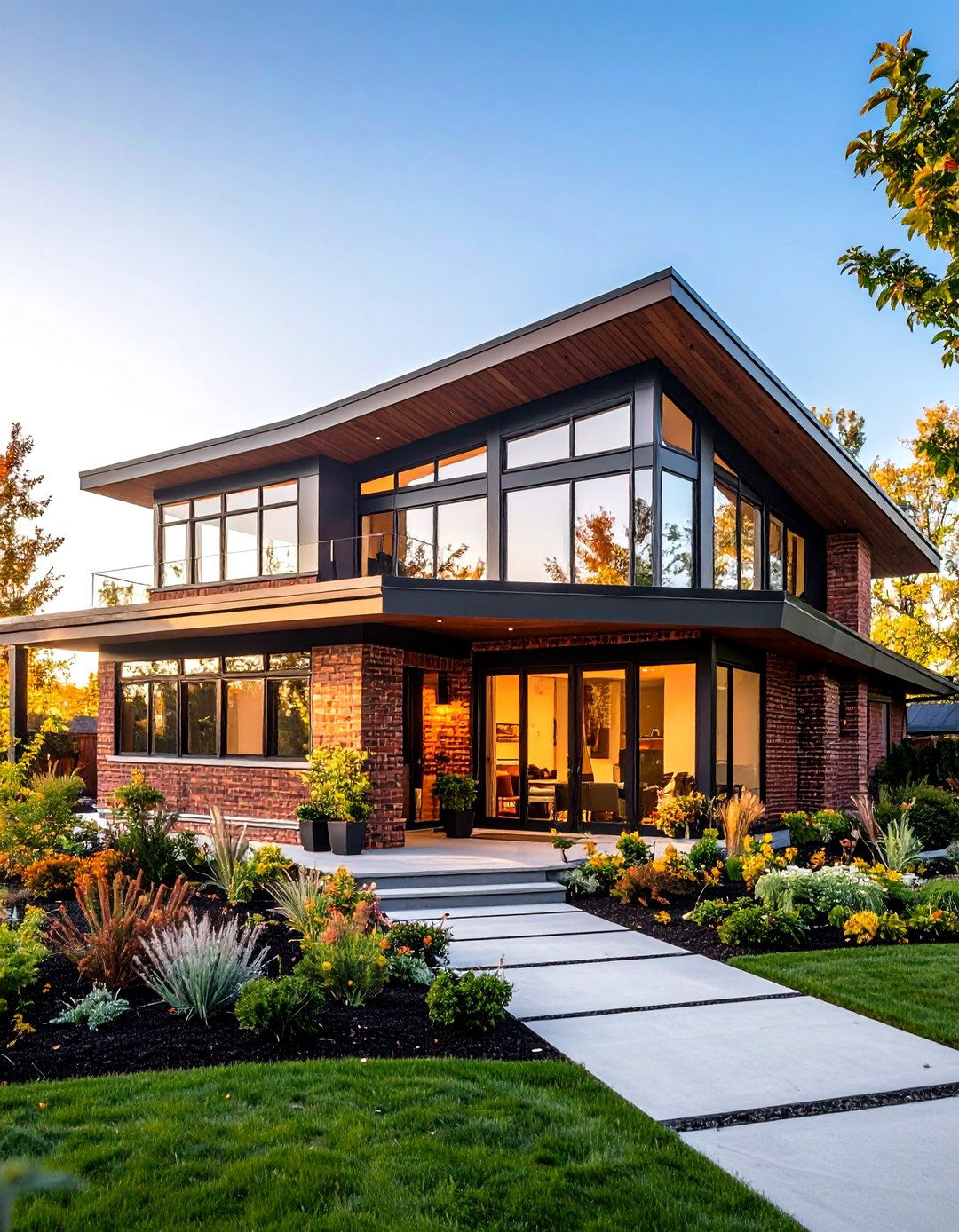
Leave a Reply